
The charm of Kyoto lies in its historic streets and temples and shrines. No matter what time of year you visit, you can enjoy the seasonal changes in the city. Here is a list of Kyoto’s sightseeing spots, from the royal spots recommended for first-time visitors to the hidden gems for those who have visited the city many times.
Contents
- 1 1] Gion, Higashiyama
- 1.1 Kiyomizu Temple
- 1.2 Jishu-jinja Shrine [*The shrine is closed for restoration work.
- 1.3 Niningsaka, Sanneizaka, Kiyomizu-zaka
- 1.4 Kodaiji Temple
- 1.5 Yasaka Shrine
- 1.6 Yasaka Koshindo
- 1.7 Yasui Kompiragu Shrine
- 1.8 Kenninji temple
- 1.9 Hanamikoji Dori
- 1.10 southern seat
- 1.11 Pontocho (area of Tokyo near Tokyo Bay, inc. Niigata, Toyama, Ishikawa and Fukui prefectures)
- 1.12 Rengeoin Sanjusangendo
- 1.13 Kyoto National Museum
- 2 2] Shijo, Karasuma Oike
- 3 3] Ginkakuji Temple, Okazaki
- 4 4] Kamigamo Shrine – Nishijin – Kyoto Imperial Palace
- 5 5] Around Kinkakuji Temple
- 6 6】Arashiyama・Sagano
- 7 7] Kyoto Station Area
- 8 8】 Fushimi and Uji
- 8.1 Fushimi Inari-taisha shrine (in Kyoto)
- 8.2 Gekkeikan Okura Memorial Hall
- 8.3 Terada-ya
- 8.4 Byodoin Temple
- 8.5 Uji Bridge, Statue of Murasaki Shikibu
- 8.6 Mimuroto-ji Temple
- 8.7 Shoujuin Temple
- 8.8 Suntory Yamazaki Distillery [*Closed until fall 2023].
- 8.9 Asahi Beer Oyamazaki Villa Museum of Art
- 8.10 Ishimizu Hachimangu Shrine
- 8.11 Shokado Garden and Art Museum
- 9 10] Ohara, Kurama, Kibune
- 10 11] Tango Peninsula, Northern Kyoto Prefecture
1] Gion, Higashiyama
Gion and Kiyomizu-dera Temples are located in this area, which is the center of Kyoto’s historical sightseeing. The area retains an atmospheric landscape that is best described as “hanrin,” and if you are lucky, you may run into a maiko on the street.
Kiyomizu Temple
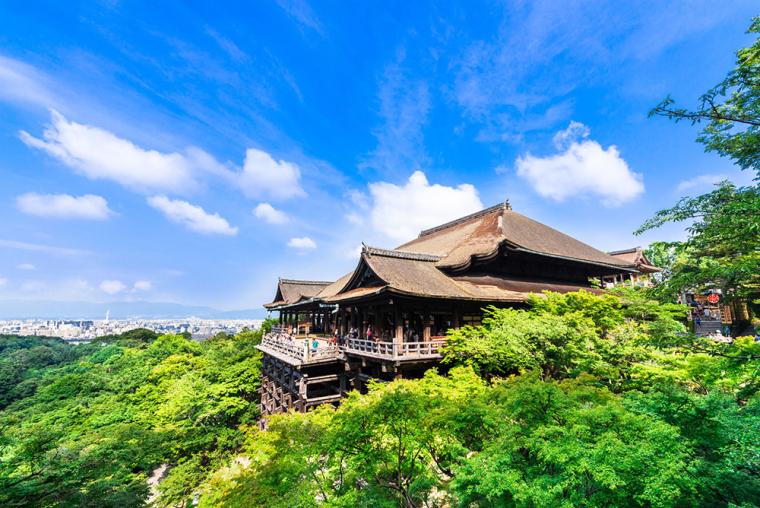
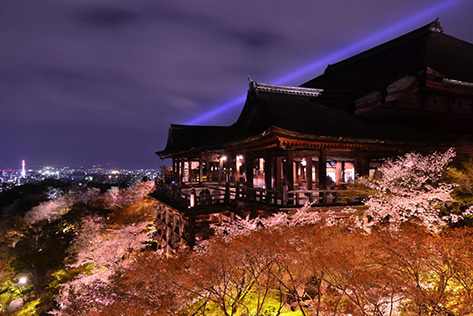
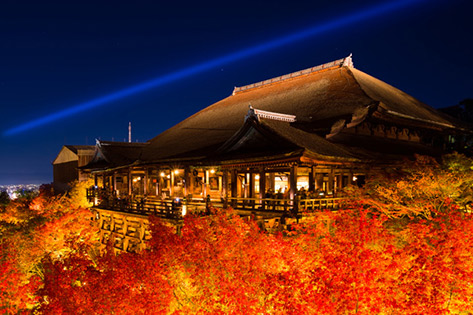
Kiyomizu-Dera Temple, a World Heritage Site, is one of Kyoto’s most famous tourist attractions. The three-story pagoda in the middle of Mt. Otowa, the main hall known for its Kiyomizu-no-Butai (stage of Kiyomizu), and the inner sanctuary form a magnificent complex. It is surprising that not a single nail was used to support the pillars that support the stage, which is built on a cliff.
The view of the city of Kyoto from the stage of Kiyomizu is a must-see! Not only that, the beautiful scenery attracts many tourists throughout the year: cherry blossoms in spring, fresh greenery in early summer, and autumn leaves in fall.Hours.6:00-18:00 *Depends on the season
Open all year roundChargeAdults 400 yen, Elementary and junior high school students 200 yenAccessFrom Kyoto Station, take the city bus to Gojozaka and walk 10 minutes.address (e.g. of house)1-294 Shimizu, Higashiyama-ku, Kyoto-shi, Kyotohome pageOtowayama Shimizu-dera Temple Official Website
Jishu-jinja Shrine [*The shrine is closed for restoration work.
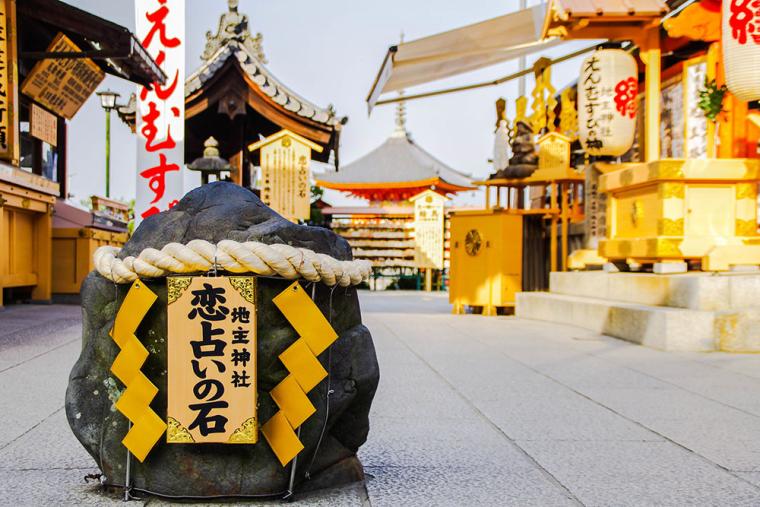
Jishu Shrine, located on the grounds of Kiyomizu-dera Temple, is known as the god of marriage. The “stone of love fortune-telling,” which is said to bring love to a person who walks with his or her eyes closed from one stone and safely reaches the stone on the other side, is very popular.
*The gate is closed for restoration work on the shrine pavilions (scheduled for August 2022-3 years).address (e.g. of house)1-317 Kiyomizu, Higashiyama-ku, Kyoto (on the grounds of Kiyomizu Temple)home pageKyoto Jishu Shrine official website
Niningsaka, Sanneizaka, Kiyomizu-zaka
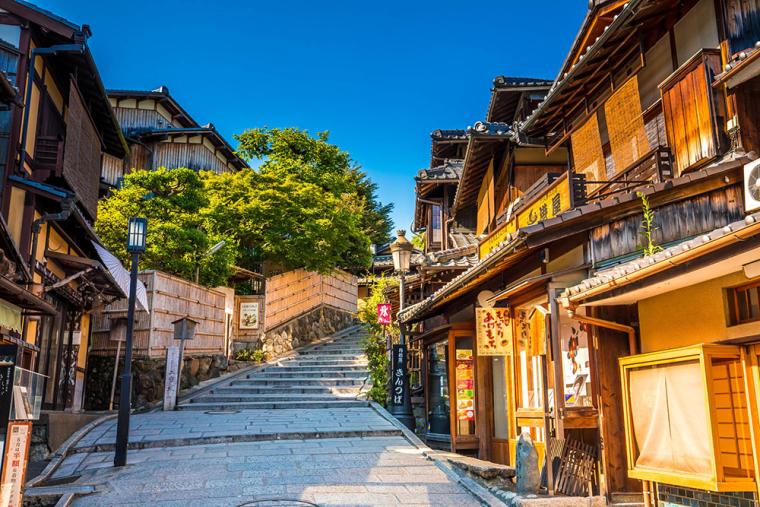
The approach to Kiyomizu-dera Temple is Ninen-zaka (Ninning slope), Sanneizaka (Sannen-zaka), and Kiyomizu-zaka, and is the most popular sightseeing street in Kyoto. Along the atmospheric stone-paved slope, stores selling souvenirs, sweets, Japanese sundries, etc., typical of Kyoto, line the street.
On Niningsaka, Starbucks Coffee Kyoto Niningsaka Yasaka Chaya is located in a Japanese-style house that is over 100 years old. Check out the pure Japanese style store with a brick entrance and tatami room seating!Access[From Kyoto Station, take the city bus to “Kiyomizu-michi” and walk about 7 minutes.
Kodaiji Temple
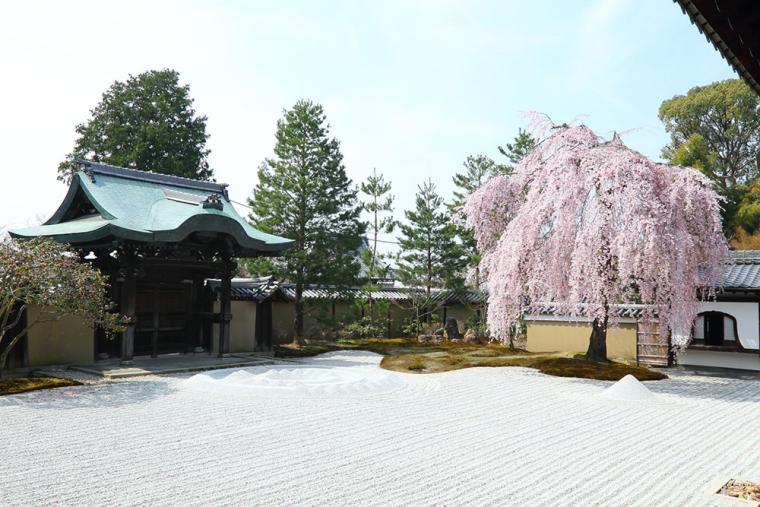
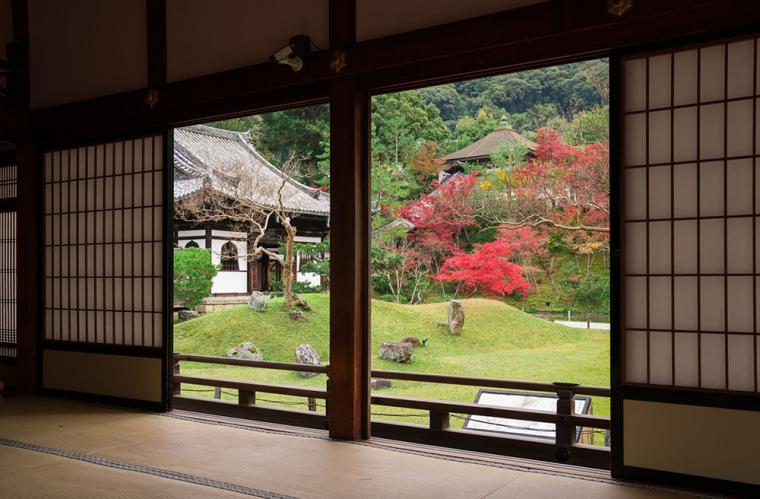
Kodaiji Temple was built by Kitamasasho Nene, the wife of Toyotomi Hideyoshi, and is known as “Nene’s Temple. The temple is also famous for its cherry blossoms and autumn leaves, which are illuminated when they are at their best.Hours.9:00 – 17:30 (Reception closes at 17:00)
Open all year roundChargeAdults 600 yen, Junior high and high school students 250 yenAccessFrom Kyoto Station, take the city bus to Higashiyama Yasui and walk about 7 minutes.address (e.g. of house)526 Shimogawara-cho, Higashiyama-ku, Kyoto Cityhome pageKodaiji Temple Official Website
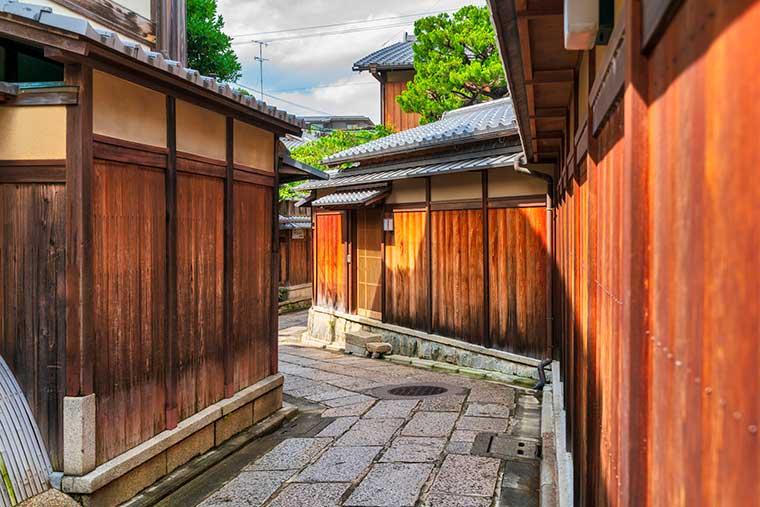
Nene-no-michi,” a granite-paved path in front of Kodaiji Temple, and Ishibe Koji, an alley lined with wooden houses, stone pavement, and stone walls, are also tasteful and recommended for a stroll.
Yasaka Shrine
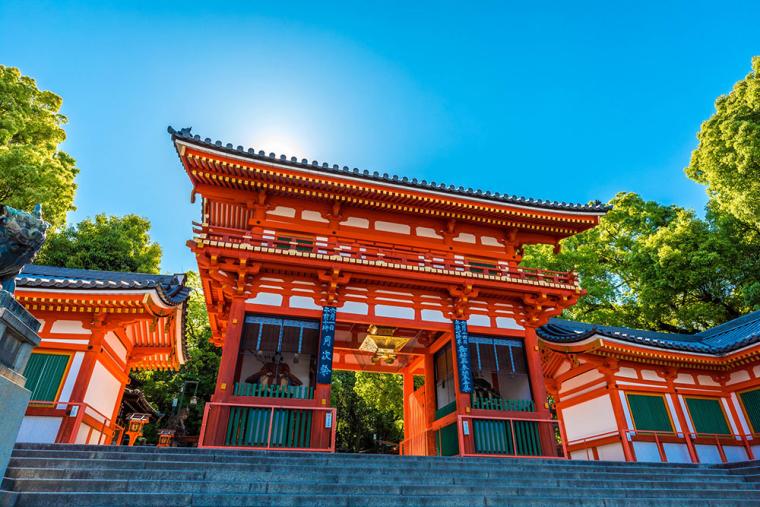
Yasaka Shrine is the guardian deity of the city of Kyoto and is said to ward off evil spirits, ward off epidemics, and bring prosperity to business. Gion Matsuri, one of the three major festivals in Japan, is a month-long festival held in July at Yasaka Shrine. The highlight of the festival is the Yamaboko Junko, a procession of floats through the streets of Kyoto, which is registered as a UNESCO Intangible Cultural Heritage as “Yamaboko Event of Kyoto Gion Festival.
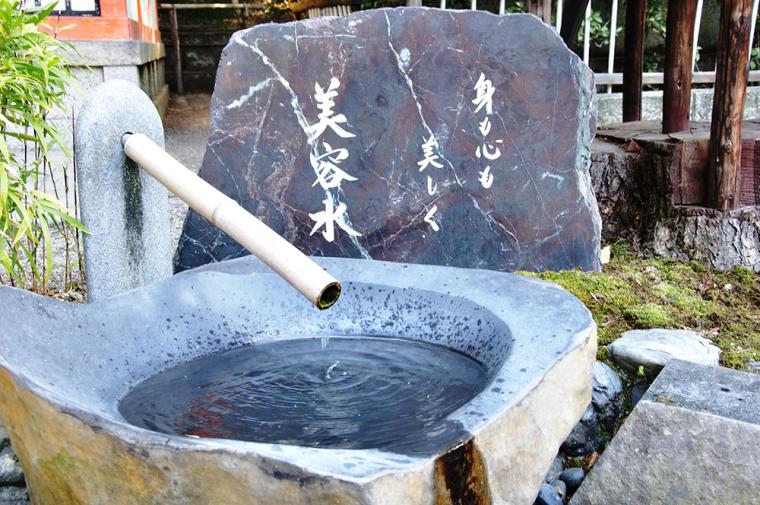
At the “Utsukushi-Gozensha” on the east side of the main shrine, divine water called “beauty water” gushes out, which is popular among beauty-conscious women for its ability to beautify both the skin and the mind.
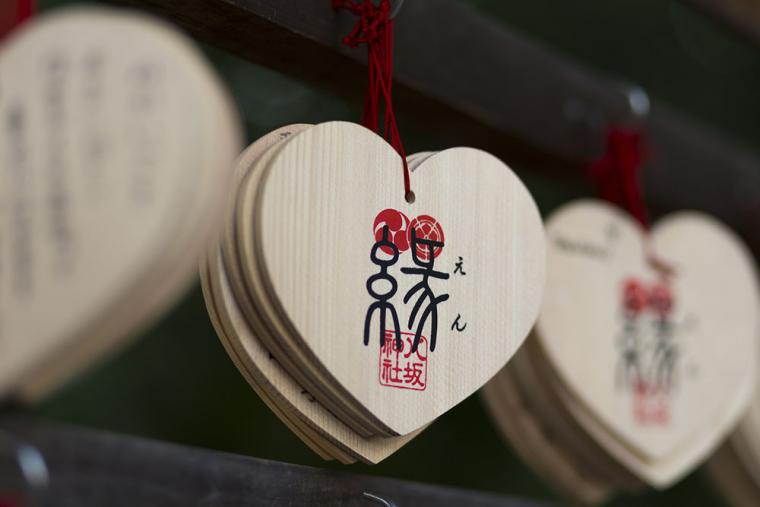
On the west side of the main shrine is the Okuninushi-sha Shrine, which is said to bring good luck in marriage. There is also a cute heart-shaped ema (votive tablet), so if you wish for a good marriage, do not forget to visit this shrine as well.Hours.Prayer services available 24 hours a dayChargefreeAccessShort walk from “Gion” city bus stop from Kyoto Station
5 minutes on foot from Gion-Shijo Station on the Keihan Line
Approximately 8 minutes on foot from “Kyoto Kawaramachi” station on the Hankyu lineaddress (e.g. of house)625 Gion-cho, Higashiyama-ku, Kyoto, Japanhome pageYasaka Shrine official website
Yasaka Koshindo
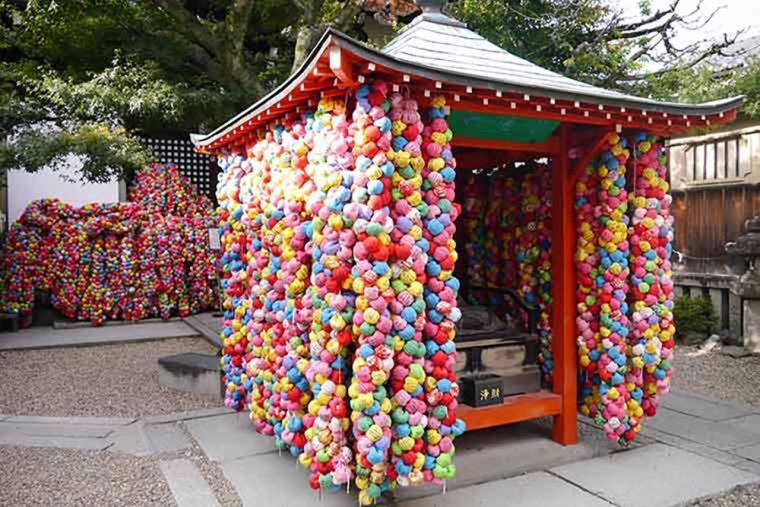
Yasaka Koshindo (Yasaka Koshindo) is a popular photogenic spot for its colorful kukuri monkeys. It is believed that if you write your wish on the kukuri monkey and attach it to the temple, your wish will come true.Hours.9:00-17:00
Open all year roundChargefreeAccess5 min. walk from Higashiyama Yasui bus stop by city bus
Approx. 15 minutes on foot from Gion-Shijo Station, Keihanaddress (e.g. of house)390 Kinen-cho, Higashiyama-ku, Kyoto City
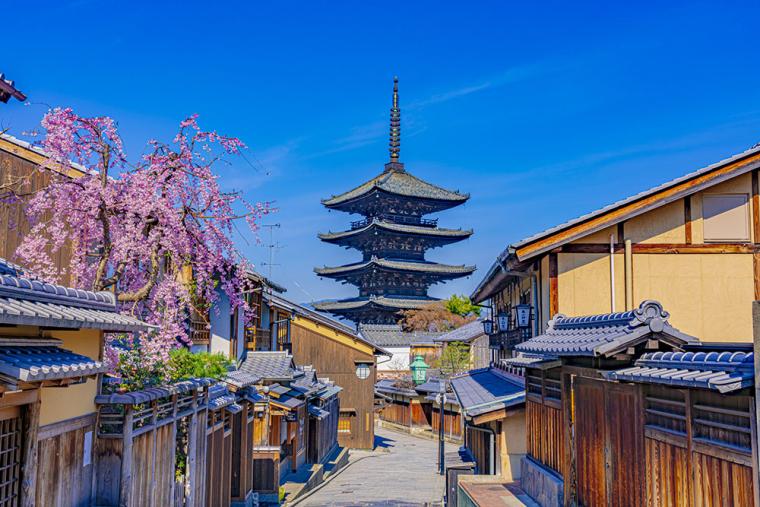
Along the slope in front of Yasaka Koshindo, there are fashionable cafes and the five-story pagoda (Yasaka-no-to). A stroll here, too, will allow you to enjoy Kyoto’s typical scenery.
Yasui Kompiragu Shrine
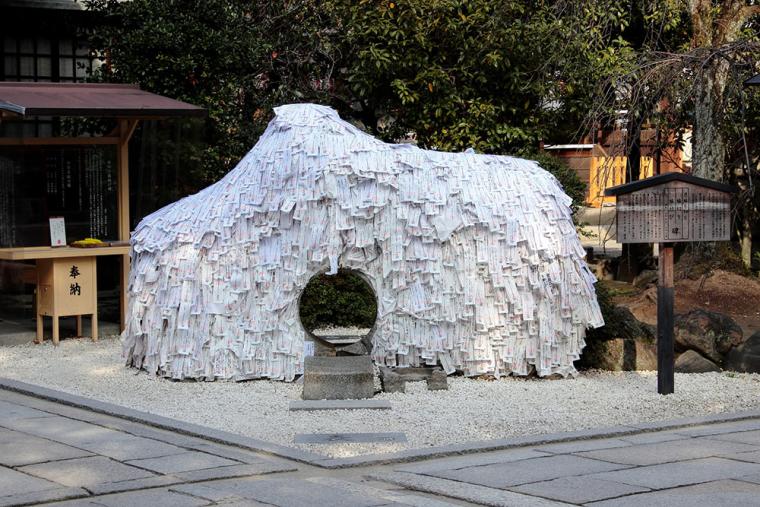
Yasui Konpiragu Shrine is known as a shrine for severing bad relationships and bringing good ones together. The “Enkiri (breakup) and Enmitsugi (matchmaking) Monument,” covered with a mass of omochidashi (votive tablets), is an eye-catching sight. After praying at the main shrine, write down your wishes on a katashiro (paper tablet), and while holding the katashiro and praying, pass through the holes in the monument from front to back and back to front, and finally place the katashiro on the monument.Hours.Open 24 hours a day
[Conferment Office] 9:00 – 17:30ChargefreeAccessShort walk from Higashiyama Yasui stop on the city bus from Kyoto Station.address (e.g. of house)70 Shimobenten-cho, Higashiyama-ku, Kyoto Cityhome pageYasui Konpiragu Shrine official website
Kenninji temple
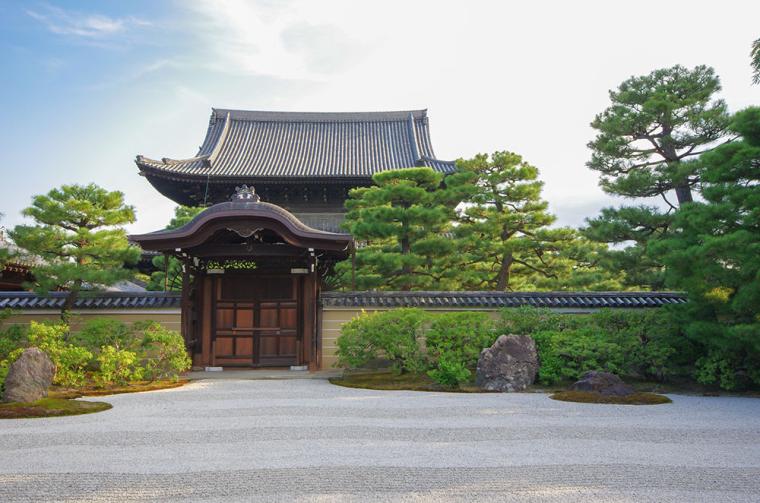
Kenninji Temple is the oldest Zen temple in Kyoto. Don’t miss the famous national treasure “The Wind and Thunder Gods” by Tawaraya Sotatsu (reproduction) and the magnificent 108-tatami-mat ceiling painting “Souryuu” by the Japanese painter Koizumi Jun. The temple also offers a sutra copying experience (1,000 yen for sutra payment, no reservation required) and a free Zen meditation experience on the second Sunday of each month at 7:30 in the morning.Hours.10:00-16:30 (gates close at 17:00)ChargeAdults 600 yen, Junior and senior high school students 300 yen, Elementary school students 200 yenAccessFrom Kyoto Station, city bus “Higashiyama Yasui” stop, approx. 5 min. walk
From Keihan “Gion-Shijo” station, about 7 minutes on footaddress (e.g. of house)584 Komatsu-cho, Yamato-oji Shijo-sagaru, Higashiyama-ku, Kyotohome pageKenninji Temple Official Website
Hanamikoji Dori
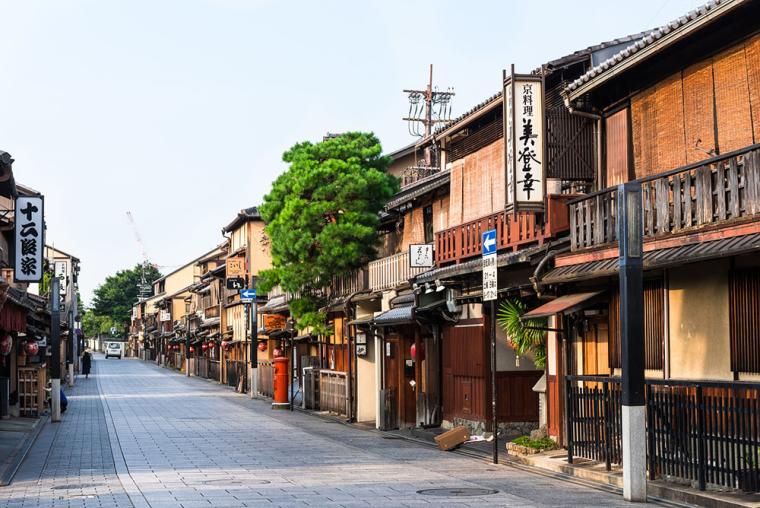
Hanamikoji Dori runs north-south through the center of Gion, from Sanjo Dori in the north to Kenninji-mae in the south. There are many popular sweet shops in this area, so why not stop by while strolling around?
The area from Shijo Dori to Kenninji Temple is “Gion Koubu,” one of Kyoto’s five flower districts, and is lined with traditional teahouses and ryotei restaurants. Around sunset, you may see maiko (apprentice geisha) going out to their tatami rooms.
*Photography is not allowed on the private roads in the area. Even if you see a maiko or geiko, you are not allowed to touch them or take pictures of them without permission.AccessShort walk from “Gion” city bus stop from Kyoto Station
3 minutes walk from “Gion-Shijo” station on Keihan Line
5 minutes walk from Hankyu “Kyoto Kawaramachi” stationaddress (e.g. of house)South side of Gion-cho, Higashiyama-ku, Kyoto
southern seat
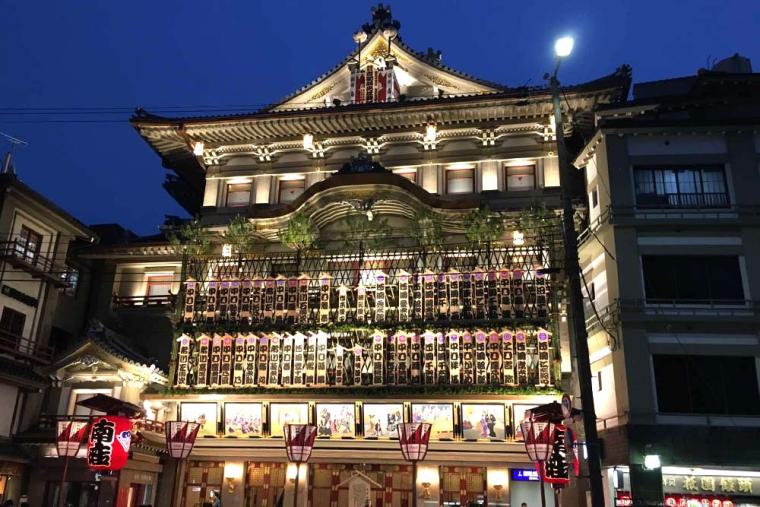
This theater, located at the foot of the Shijo Ohashi Bridge, boasts approximately 400 years of history and tradition. It is said to be the birthplace of Kabuki, where Izumoakuni started the Kabuki Dance. Even if you do not see kabuki inside, the building itself, which is registered as a tangible cultural property of Japan, is worth seeing.AccessDirectly connected to Keihan “Gion-Shijo” station
3 minutes walk from Hankyu “Kyoto Kawaramachi” stationaddress (e.g. of house)Higashiyama-ku, Kyoto-shi, Kyotohome pageMinamiza” Official Website
Pontocho (area of Tokyo near Tokyo Bay, inc. Niigata, Toyama, Ishikawa and Fukui prefectures)
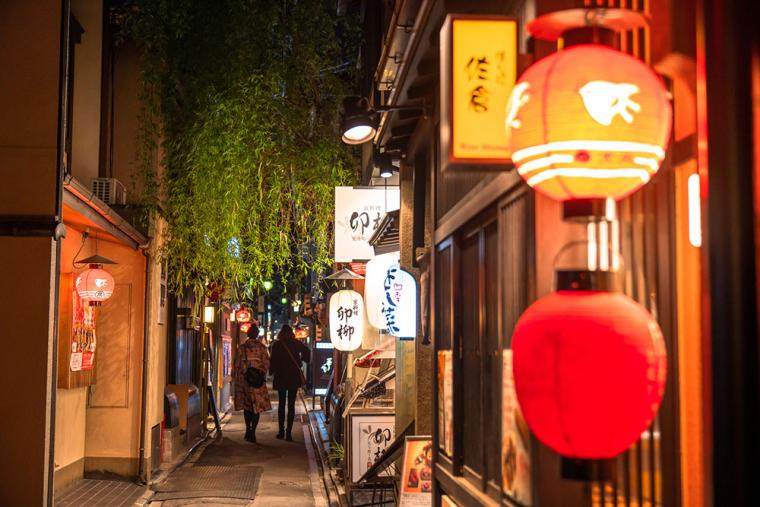
Ponto-cho” is one of Kyoto’s five flower streets. Restaurants and other establishments line the long, narrow alleyway along the Kamo River between Sanjo and Shijo. From long-established Japanese restaurants to Italian and French restaurants and bars, there are many restaurants that even first-time visitors can casually visit. In summer, there are also restaurants where you can enjoy your meal on the Noryokoko.
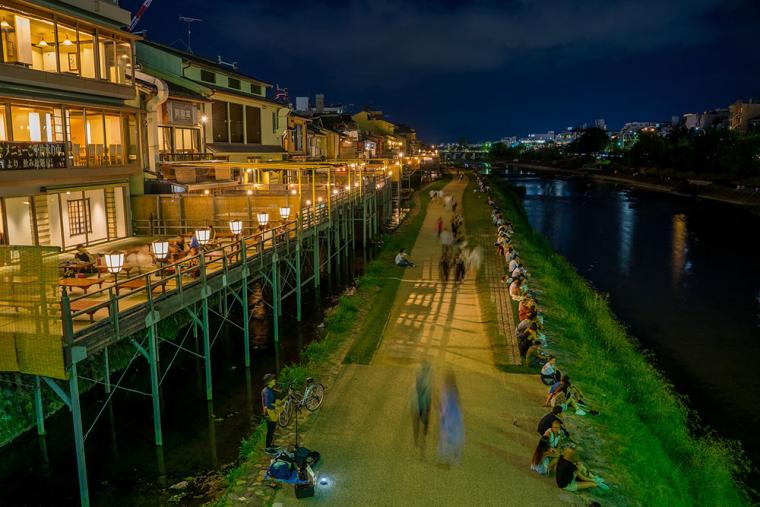
Along the street is the Ponto-cho Kaburenjo, which is both a rehearsal hall and theater for geiko and maiko. Every year from May 1-24, dance performances “Kamogawa Odori” by geiko and maiko from Ponto-cho are held here.AccessGet off at “Gion-Shijo” or “Sanjo” station of Keihan or “Kyoto-Kawaramachi” station of Hankyuhome pagePontocho Kamogawa Odori” official website
Rengeoin Sanjusangendo
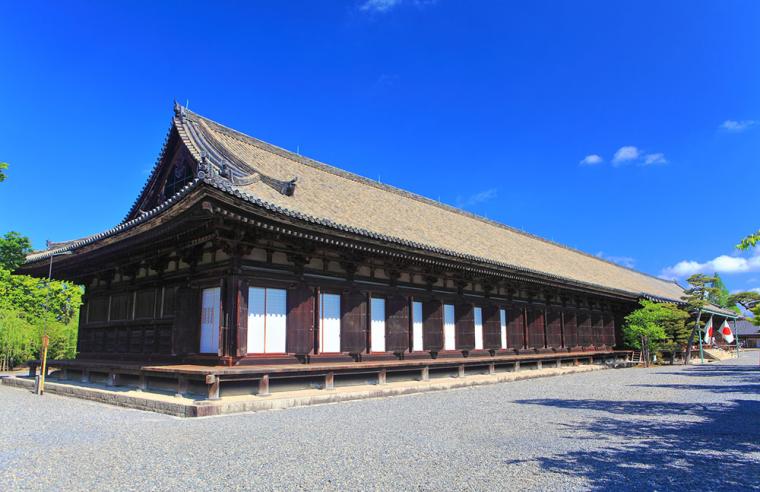
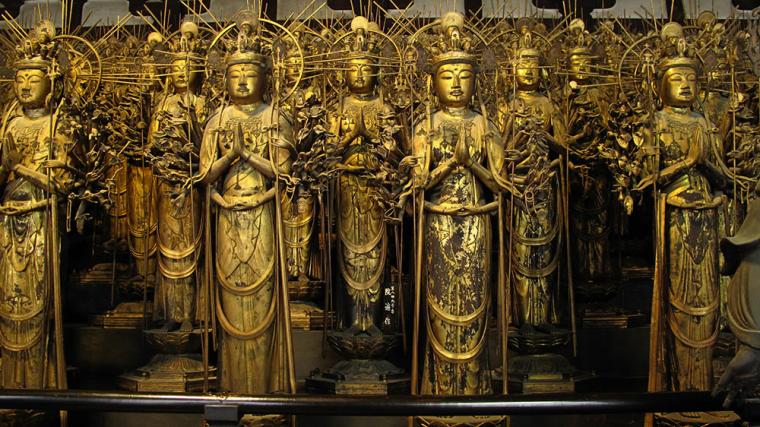
The 120-meter-long main hall, Sanjusangendo, is a spectacular sight with a seated statue of the thousand-armed Kannon, a national treasure, and 1,000 standing statues of the thousand-armed Kannon all lined up in a row. It is said that every statue of the Kannon has a slightly different face, and that there is always a statue that resembles the person you wish to meet.Hours.[April – November 15] 8:30 a.m. – 5:00 p.m.
[November 16-March] 9:00-16:00 (open until 30 minutes before closing)
Open all year roundChargeAdults 600 yen, junior high and high school students 400 yen, children 300 yenAccessShort walk from Kyoto Stn. on the city bus “Museum, Sanjusangendo-mae”.
About 7 minutes walk from Keihan “Shichijo” stationaddress (e.g. of house)657 Sanjusangendo Mawarimachi, Higashiyama-ku, Kyotohome pageRengeoin Sanjusangendo” official website
Kyoto National Museum
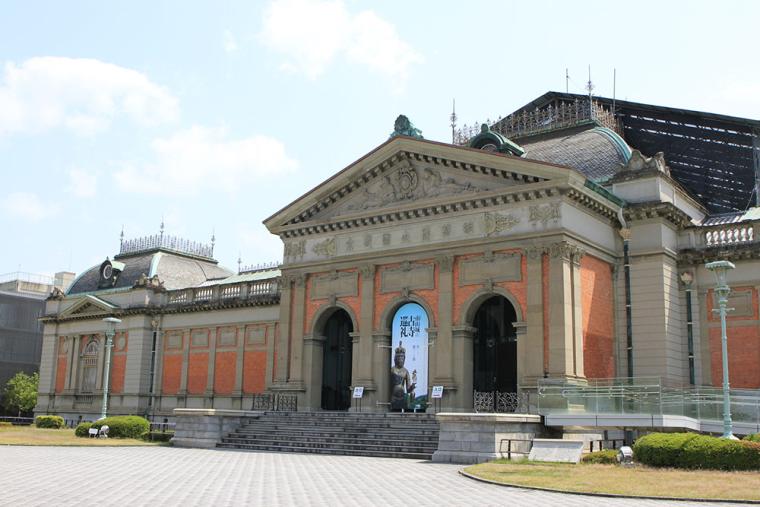
The museum houses approximately 12,000 items, mainly cultural properties associated with Kyoto. The museum’s symbol, the “Meiji Ancient Capital Building,” is a brick structure in the Baroque style and is designated as a National Important Cultural Property. The “Heisei Chishin-kan,” designed by world-renowned architect Yoshio Taniguchi, is used to view masterpieces from the museum’s collection, with exhibits changing from time to time.Hours.9:30-17:00 (last admission 16:30)
Special exhibitions vary depending on the project.closed dayMondays (if Monday is a national holiday, the museum will be open on Monday and closed the following Tuesday), Year-end and New Year holidaysChargeVaries according to the exhibition.AccessShort walk from Kyoto Stn. on the city bus “Museum, Sanjusangendo-mae”.
About 7 minutes walk from Keihan “Shichijo” stationaddress (e.g. of house)527 Chayamachi, Higashiyama-ku, Kyotohome pageKyoto National Museum official website
2] Shijo, Karasuma Oike
While restaurants and cafes are popping up one after another, many long-established establishments remain, making this Kyoto’s best downtown area a fusion of the old and the new.
Nishiki Market
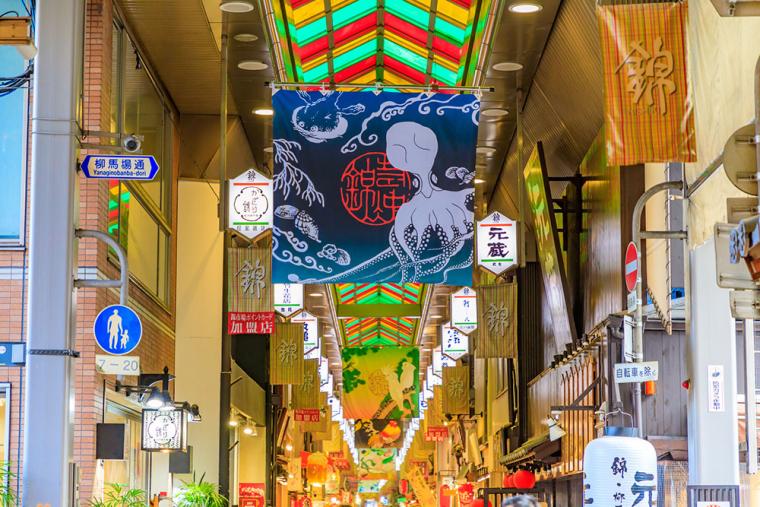
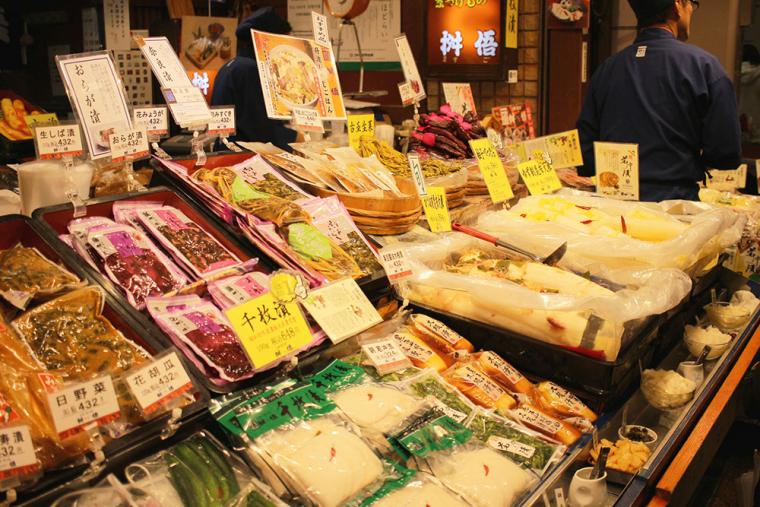
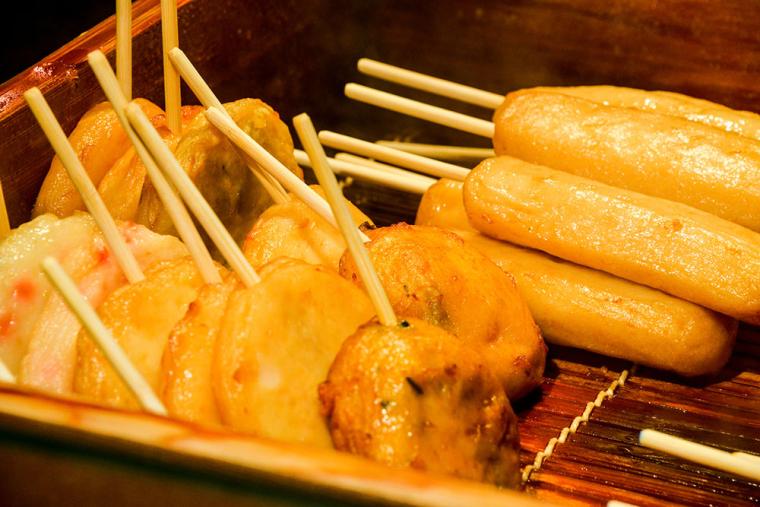
The kitchen of Kyoto is lined with about 130 stores selling fresh and dried fish, dried vegetables, Kyoto vegetables, pickles, Japanese sweets, etc. on both sides of the narrow 390-meter-long street. Some stores allow visitors to eat their purchases inside, making it a fun place to visit and enjoy eating your way through the stores.Business HoursVaries by storeAccessApprox. 2 minutes walk from Shijo Takakura bus stop by city bus from Kyoto Station
Approximately 3 minutes on foot from Shijo Station on the Subway Karasuma Line and Karasuma Station on the Hankyu Railway
Approximately 4 minutes on foot from “Kyoto Kawaramachi” station on the Hankyu line
About 10 minutes on foot from Gion-Shijo Station on the Keihan Lineaddress (e.g. of house)Nishiki-koji Dori, Nakagyo-ku, Kyoto Cityhome pageNishiki Market Shopping Street” official website
The Museum of Kyoto
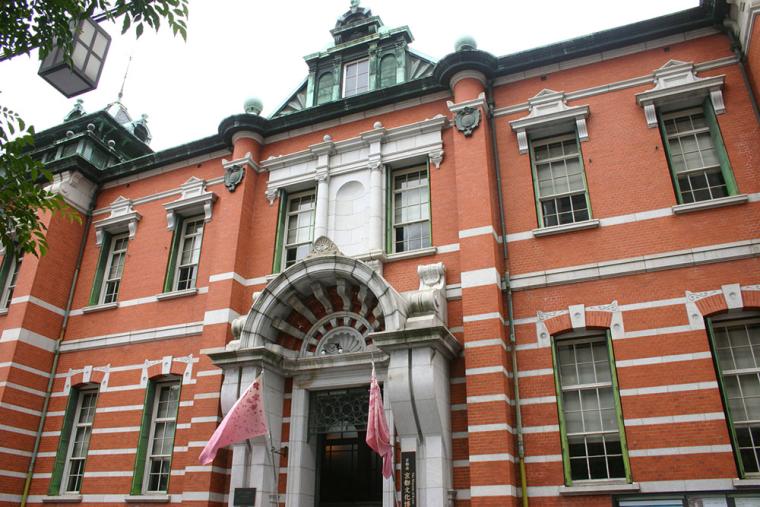
Built as part of a project to commemorate the 1200th anniversary of the founding of the Heian Capital, this comprehensive cultural facility introduces the culture and history of Kyoto in an easy-to-understand manner. In addition to special exhibitions, the museum displays artifacts related to Kyoto and shows classic films.
The red brick annex was formerly the Kyoto branch of the Bank of Japan and was designed by Kingo Tatsuno, who also designed Tokyo Station. It is designated as an Important Cultural Property. There are also restaurants and stores, including a coffee shop converted from a former vault, so a visit to see the inside of a modern Western building is also recommended.Hours.[General Exhibition] 10:00-19:30 [Special Exhibition] 10:00-18:00, Fridays ~19:30 (admission until 30 minutes before)closed dayMondays (if Monday is a national holiday, the museum will be open on Monday and closed the following day), December 28 – January 3admission fee[General Exhibition] Adults ¥500, College students ¥400, High school students and younger free
[Special Exhibitions] Varies according to the exhibition.
[Annex] Free of chargeAccess3 minutes walk from “Karasuma Oike” subway station
Approximately 7 minutes on foot from “Karasuma” station on the Hankyu lineaddress (e.g. of house)Sanjo Takakura, Nakagyo-ku, Kyotohome pageThe official website of the Museum of Kyoto
Shiyunsan Tingho-ji Temple (Rokkakudo)
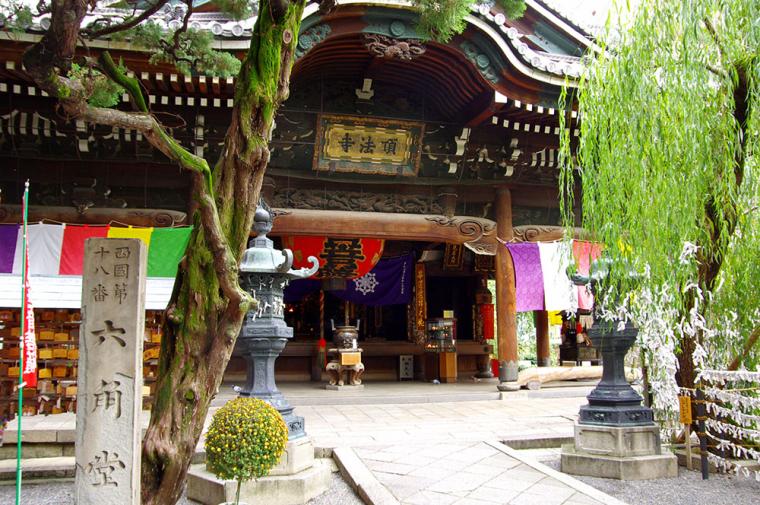
Known as “Rokkakudo” because of the shape of its main hall, this ancient temple was built by Prince Shotoku. It is also known as the birthplace of ikebana, the art of flower arrangement, which was later developed into flower arrangement by the temple’s abbot, Ikenobo. From Starbucks Coffee on the first floor of the building next door, Rokkakudo can be seen from the temple, and we recommend enjoying a cup of coffee and a view of this historic temple.Hours.6:00 – 17:00
Open all year roundChargefreeAccess3 minutes walk from “Karasuma-Oike” subway station
5 minutes walk from “Karasuma” station on Hankyu lineaddress (e.g. of house)Rokkaku-dori Higashinotoin Nishiiru Donomae-cho, Nakagyo-ku, Kyotohome pageRokkakudo” official website
3] Ginkakuji Temple, Okazaki
With Ginkakuji Temple and the Philosopher’s Path, the area offers beautiful seasonal scenery and is fun to stroll around. There are also many art museums, so art lovers should not miss them.
Jishoji Temple (Ginkakuji Temple)
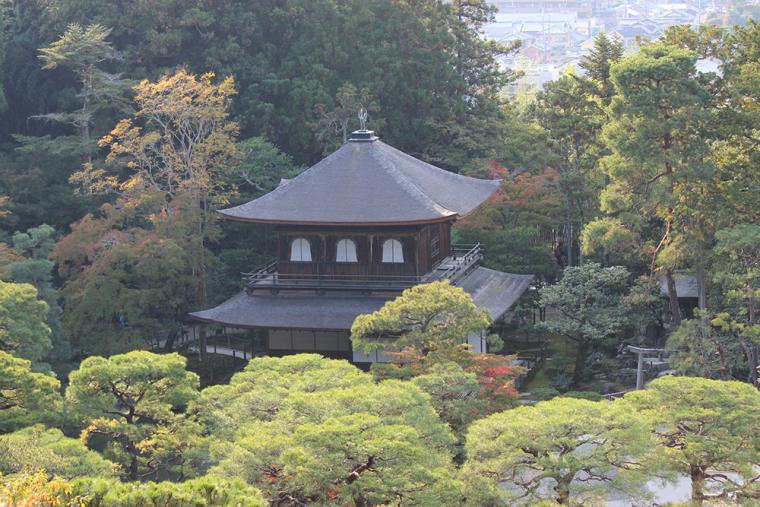
Ginkakuji Temple, although not silver in color, is said to have derived its name from the fact that it was called “Ginkakuji Temple” in contrast to Kinkakuji Temple during the Edo period (1603-1868). Officially called “Jishoji Temple,” the temple was named after a villa built by Ashikaga Yoshimasa, which was converted to a Rinzai sect temple after his death. It is popular as a spot where visitors can feel the wabi-sabi worldview that reflects Yoshimasa’s aesthetic sense. It is registered as a World Heritage site.Hours.[March – November] 8:30 – 17:00
[December – February] 9:00 – 16:30 *Different times for special visits.
Open all year roundChargeAdults (high school students and older): 500 yen, Elementary and junior high school students: 300 yen
(*Different during special viewing times.AccessFrom Kyoto Station, take the city bus to “Ginkakuji-michi” and walk 10 minutes.address (e.g. of house)2 Ginkakuji-cho, Sakyo-ku, Kyotohome pageGinkakuji Temple official website
road of philosophy
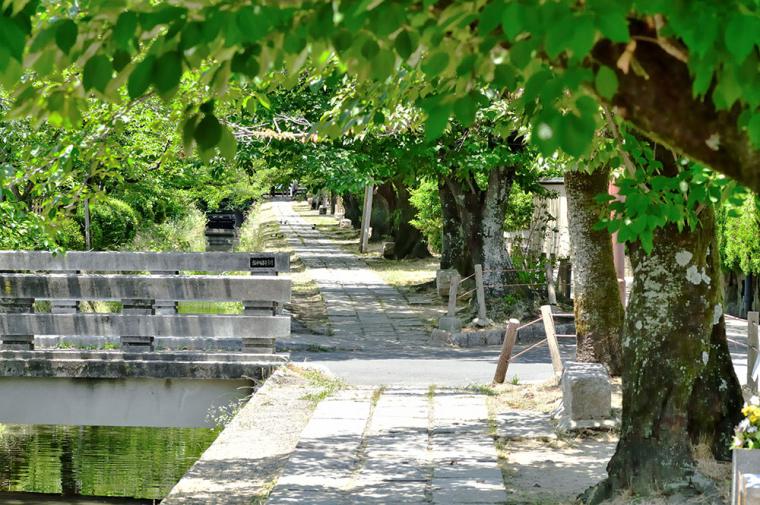
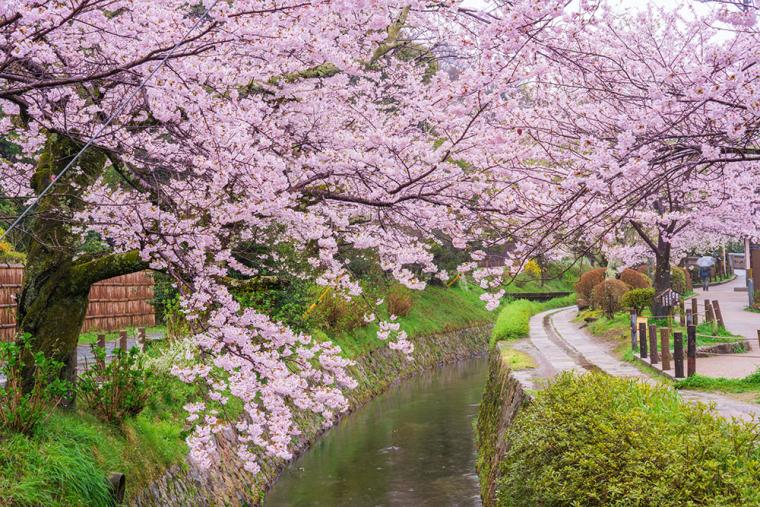
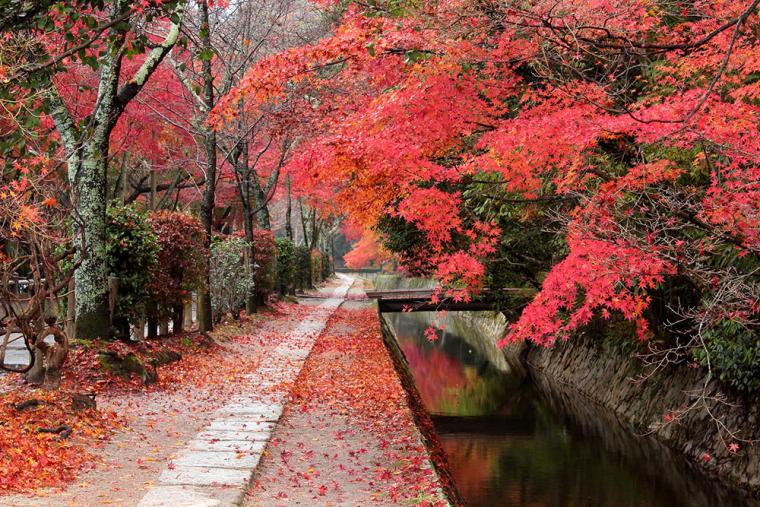
The path along the Sosui that runs from Wakaoji Shrine to Ginkakuji Temple is said to have been named after Kitaro Nishida, one of Japan’s most famous philosophers, as it is the path along which he spent time in contemplation. The path is also popular as a cherry blossom viewing spot, and in spring, approximately 400 Someiyoshino cherry trees adorn the 2-km path. The path also offers a different experience every time you visit, such as when the trees are freshly green or the leaves turn red.Access[From Kyoto Station, take a city bus and get off at Ginkakuji-mae or Ginkakuji-michi.
[From Kyoto Station, take the city bus to “Nanzenji Eikando-mae”, “Miyanomae-cho”, or “Higashi-tenno-machi” and get off at “Nanzenji Eikando-mae”.
Heian Shrine

Heian Jingu Shrine, dedicated to Emperor Kammu, was built in 1895, the 1,100th anniversary of the transfer of the capital to Heian. The vermilion and green pavilions of the shrine stand out beautifully against the white sand.
One of the highlights of the shrine is the “Shinen,” a vast garden with a circular path around a pond, which surrounds the shrine pavilions. The garden was designed by Jihei Ogawa VII, a landscape architect who also created famous gardens such as Maruyama Park and Murinan, and offers a seasonal view of weeping cherry blossoms in spring, irises in early summer, and autumn leaves in fall.
On October 22, the Jidai Matsuri, one of the three major festivals in Kyoto, is held. A procession of people dressed in costumes from eight different periods, including Edo, Muromachi, and Kamakura, parades from the Kyoto Imperial Palace to Heian Shrine to the sound of drums. The procession is accompanied by the sound of taiko drums.precincts[February 15 – March 14, October] 6:00 – 17:30
[March 15 – September] 6:00 – 18:00
[November – February 14] 6:00 – 17:00 *Different times during the year-end and New Year’s holidays.
Free of chargeshrine gardens[March 1 – March 14, October] 8:30 a.m. – 5:30 p.m.
[March 15 – September] 8:30 – 18:00
[November to the end of February] 8:30 – 17:00 (last admission 30 minutes before closing time)
Adults 600 yen, children 300 yenAccessFrom Kyoto Station, take the city bus to Okazaki Park Museum/Heian Jingu-mae and walk 5 minutes.
10 minutes on foot from Higashiyama Station on the Subway Tozai Line
15 minutes on foot from Sanjo Station or Jingu-Marutamachi Station on the Keihan Lineaddress (e.g. of house)97 Okazaki Nishitenno-cho, Sakyo-ku, Kyotohome pageHeian Jingu” official website
Kyoto Kyocera Museum of Art
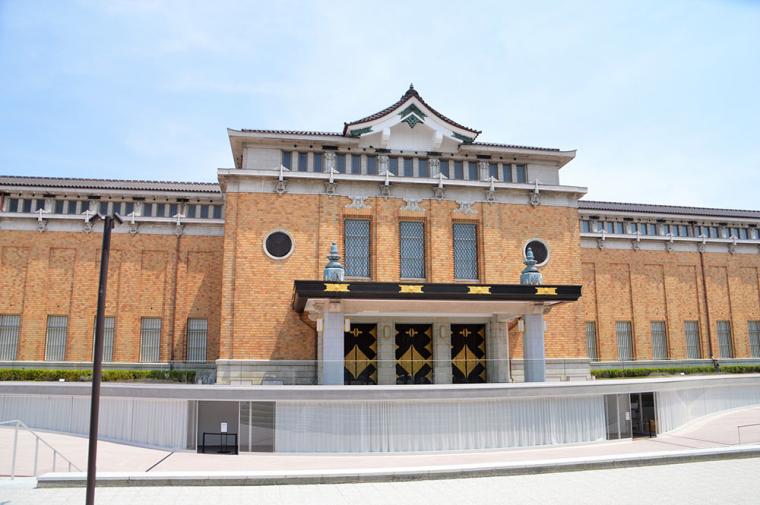
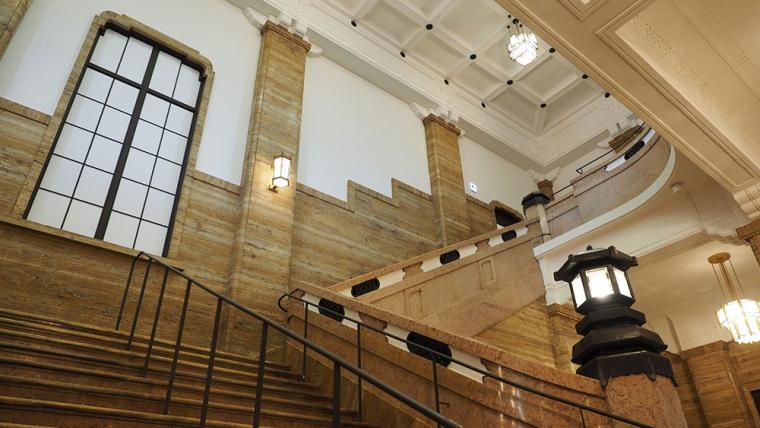
The Kyoto Kyocera Museum of Art reopened in the spring of 2020. The building was constructed in 1933, making it the oldest existing public art museum in Japan, and its retro-modern design, a fusion of Japanese and Western styles, can still be seen today.
The museum houses a collection of over 3,800 works of art, mainly Japanese paintings from the Meiji to Showa periods, as well as Western-style paintings and sculptures, which are displayed in the “Collection Room,” and a wide range of exhibitions and events are also held.Hours.10:00-18:00 (last admission 17:30)closed dayMondays (open if Monday is a national holiday), December 28 – January 2Charge[Collection Room] 730 yen for adults, 300 yen for elementary, junior high, and high school students, free for children under elementary school age (discounts available for Kyoto City residents)AccessShort walk from Kyoto Station to Okazaki Park Museum/Heian Jingu-mae by city bus
8 minutes on foot from Higashiyama Station on the Subway Tozai Line
16 minutes on foot from Sanjo Station on the Keihan Lineaddress (e.g. of house)124 Enshoji-cho, Okazaki, Sakyo-ku, Kyoto, Japanhome pageKyoto Kyocera Museum of Art official website
Eastenno Okazaki Shrine
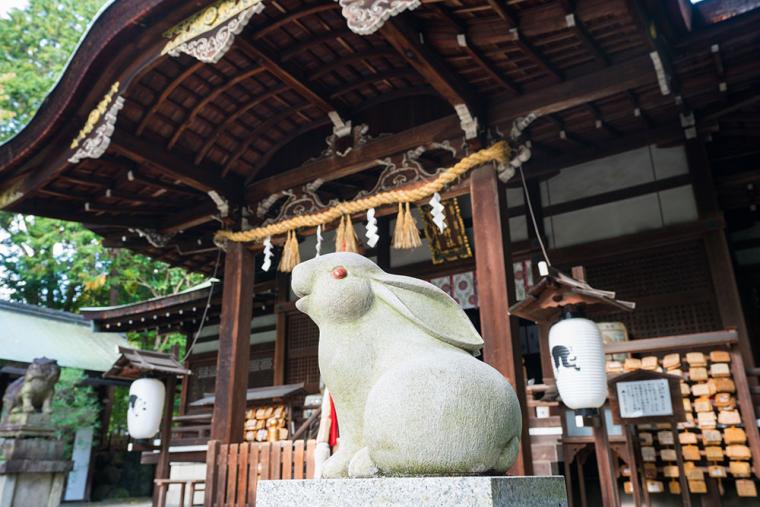
Okazaki Shrine is known as a god of fertility, safe childbirth, and marriage, since the shrine’s deity was blessed with three daughters and five sons. Since this area has been inhabited by wild rabbits since ancient times, and rabbits were popular as a symbol of fertility and safe delivery, there are many rabbit statues in the precincts of the shrine, which is popular as a “rabbit shrine.
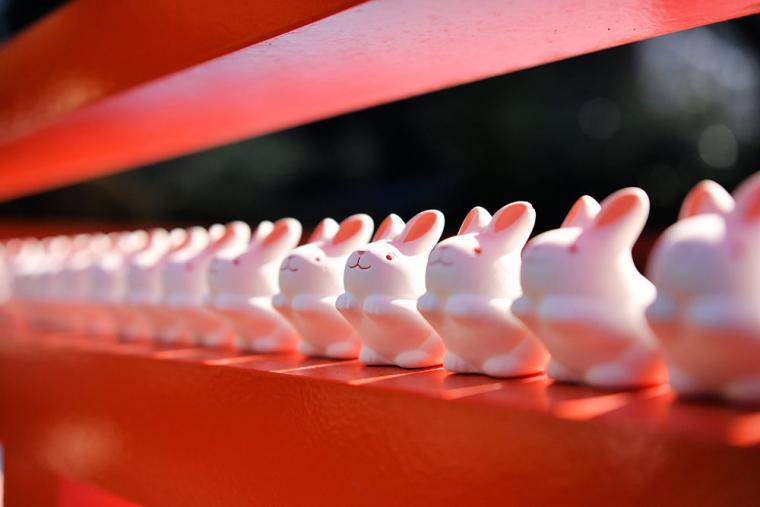
Also noteworthy are a cute rabbit omikuji (fortune slip), a statue of a baby-giving rabbit that is said to be blessed with a baby if it is sprinkled with water and rubbed on the belly, and a “komainu (guardian rabbits)” instead of komainu (guardian dogs).Hours.9:00-17:00
Open all year roundChargefreeAccessShort walk from “Okazaki Jinja-mae” or “Higashi-tenno-machi” by city bus from Kyoto Station.
15 minutes on foot from Keage Station on the Subway Tozai Line.address (e.g. of house)51 Okazaki Higashi Tenno-cho, Sakyo-ku, Kyotohome pageOkazaki Shrine official website
Nanzenji Temple
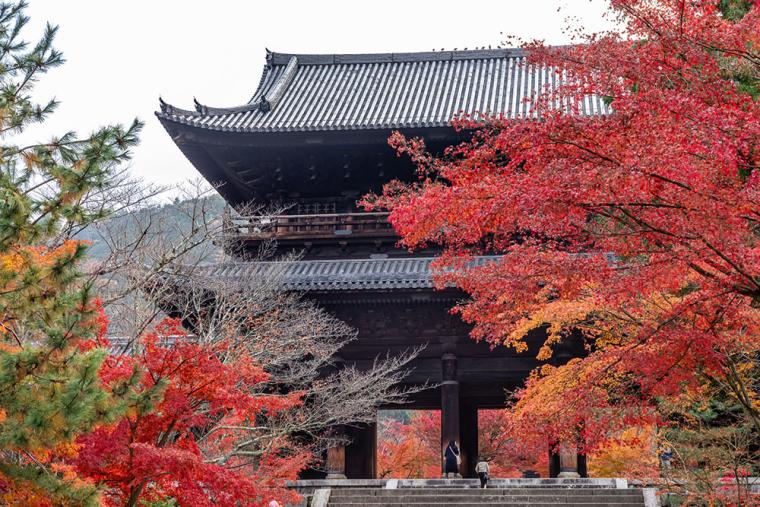
Nanzenji Temple, the main temple of the Nanzenji School of Rinzai Zen Buddhism, is known for its autumn foliage. The large Sanmon Gate, one of the three main gates in Japan and an important cultural asset, can be climbed for a spectacular view from the top. The temple is also home to paintings said to be by Kano Tanyu and a dry landscape garden said to be by Kobori Enshu.

The brick Suijikaku (Waterway Pavilion) in the precincts of Nanzenji Temple is also a must-see. You may have seen it in suspense dramas, as it often appears in scenes where a criminal confesses to the crime.
Nanzenji is also famous for its yudofu, and there are many famous yudofu restaurants in the area, such as Junsho and Okutan.Hours.[8:40 a.m. to 5:00 p.m. [March to November] 8:40 a.m. to 5:30 p.m. [December to February
[Dec. to Feb.] 8:40-16:30 (open until 20 minutes before)regular closing dayDecember 28-31Charge[Sanmon Gate: Adults 600 yen, high school students 500 yen, elementary and junior high school students 400 yen
[Hojo Garden] 600 yen for adults, 500 yen for high school students, 400 yen for elementary and junior high school students
[Nanzen-in: Adults 400 yen, High school students 350 yen, Elementary and junior high school students 250 yenAccess10 minutes on foot from Keage Station on the Subway Tozai Line
10 min. walk from Higashitennocho or Nanzenji/Eikando-michi bus stop on the city bus.address (e.g. of house)Nanzenji Fukuchi-cho, Sakyo-ku, Kyotohome pageNanzenji Temple” official website
4] Kamigamo Shrine – Nishijin – Kyoto Imperial Palace
The area is the former center of the capital with the Kyoto Imperial Palace and Nijo Castle. Temples and shrines are popular as power spots, and the abundance of greenery along the Kamo River and in the Tadasunomori forest are also attractive features of this area.
Kamigamo Shrine (Kamo Betsurai-jinja Shrine)
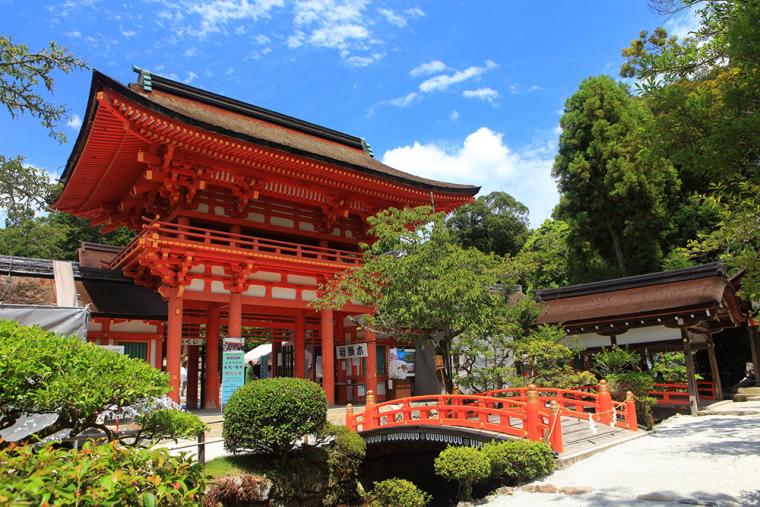
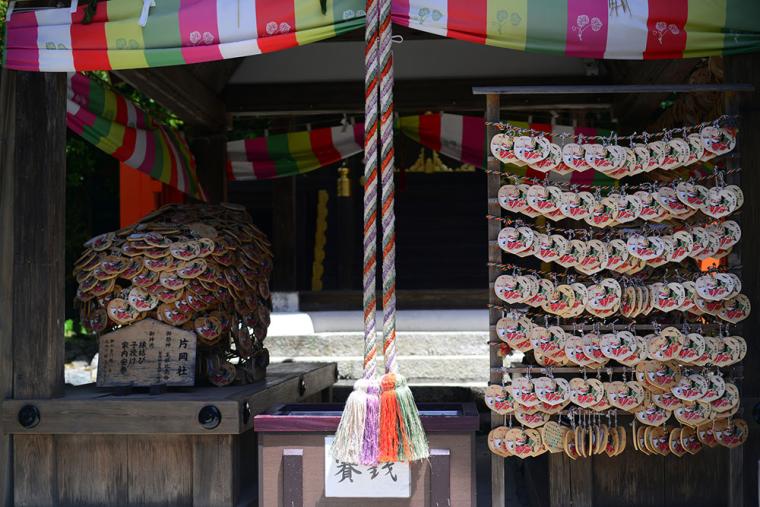
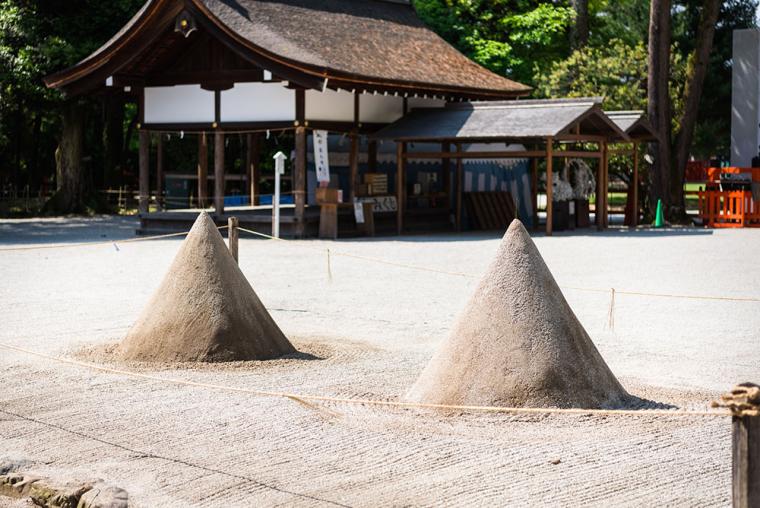
Kamowakeikazuchi Shrine, also known as Kamigamo Shrine, is one of the oldest shrines in Kyoto and has been revered for over 1,300 years since its construction in 678.
The spacious precincts of the temple are famous as a power spot, and there are many sights to see, including Tachisuna, which is shaped like a mountain where the gods descended, and Katayama Miko Shrine, a god of marriage that Murasaki Shikibu is said to have visited.
Also, on May 15, one of Kyoto’s three major festivals, the Aoi Matsuri (hollyhock festival) is held every year, and a procession of people dressed in the costumes of Heian aristocrats heads from the Kyoto Imperial Palace to Kamigamo Shrine.Hours.[Inside the second torii gate: 5:30-17:00
[8:00-16:45 (in the gate and at the awarding office)
Open all year roundChargefreeAccessShort walk from Kamigamo Shrine on the city bus from Kyoto Station.address (e.g. of house)339 Kamigamo Motoyama, Kita-ku, Kyoto, Japanhome pageKamigamo Shrine official website
Shimogamo Shrine (Kamo Goso-jinja Shrine)
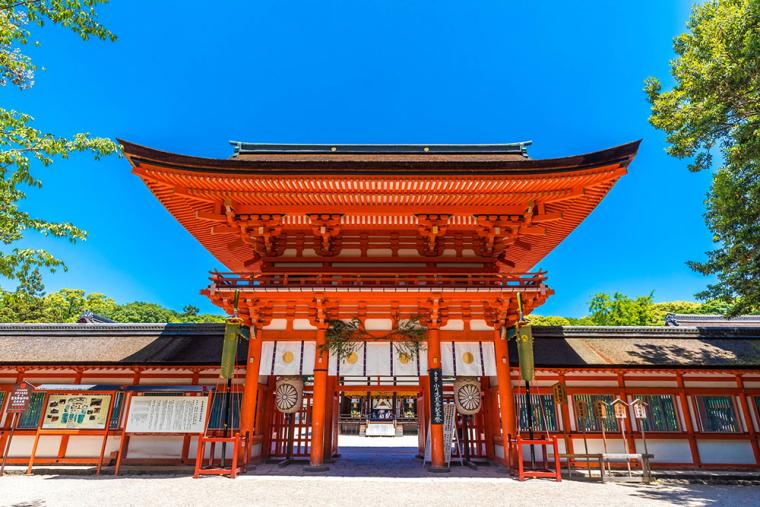
Shimogamo-jinja Shrine, with its beautiful vermilion pavilions, enshrines Kamotakenkatsunuminomikoto, the grandfather of Kamowakeikazuchi, the goddess of thunder, and Tamayorihime no Mikoto, the mother of Kamowakeikazuchi, who is worshipped at Kamigamo Shrine. This is also one of the World Heritage Sites of the “Ancient Capital of Kyoto.
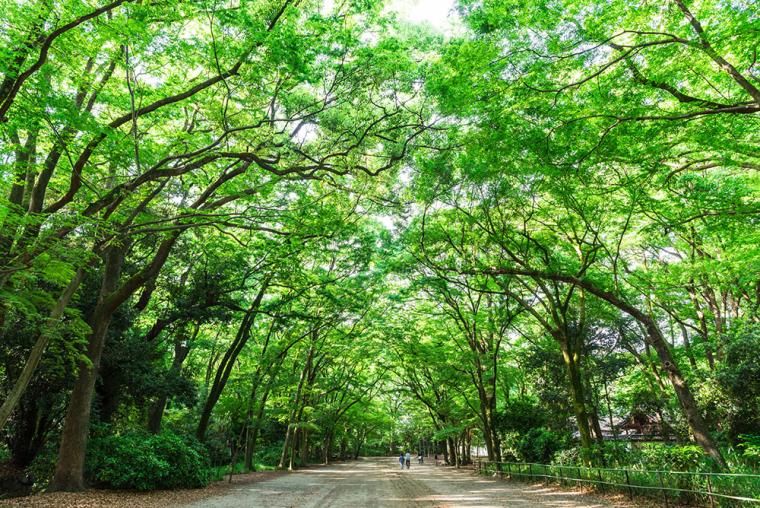
Shimogamo Shrine is also famous for the Tadasu-no-mori, a vast virgin forest that has existed since the Jomon period (as mentioned in “The Tale of Genji”), and the Yabusame (horseback archery) ritual held annually on May 3 as a prelude to the Aoi Matsuri.
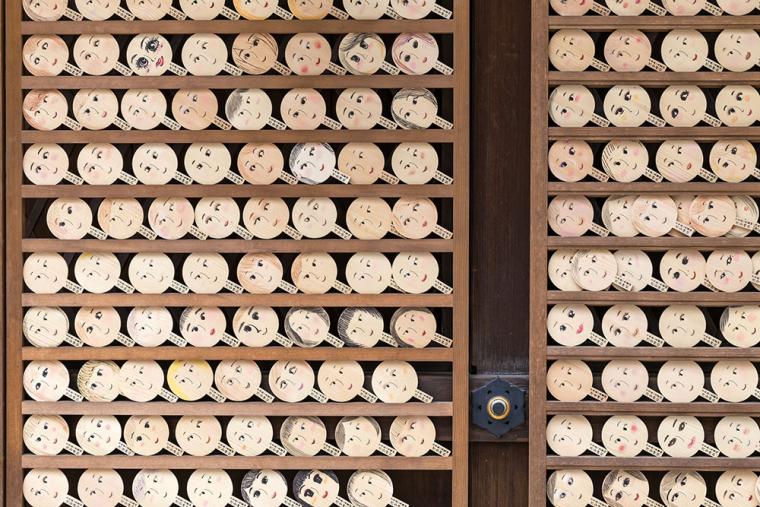
Kawai Shrine, located just inside the Tadasunomori forest, is also popular for prayers for beauty. The “Kagami-Ema” in the shape of a hand mirror is dedicated by applying makeup with one’s usual cosmetics with a wish to become beautiful. Aioisha Shrine, located near the south entrance gate, is also popular among women as a god of marriage.Hours.[Summer] 5:30-18:00
[Winter] 6:30 – 17:00
Open all year roundChargefreeAccessShort walk from Shimogamo-jinja-mae stop on the city bus from Kyoto Station
Approximately 12 minutes on foot from Demachiyanagi Station on Keihan Railway.address (e.g. of house)59 Shimogamo-Izumigawa-cho, Sakyo-ku, Kyoto Cityhome pageShimogamo-jinja Shrine official website
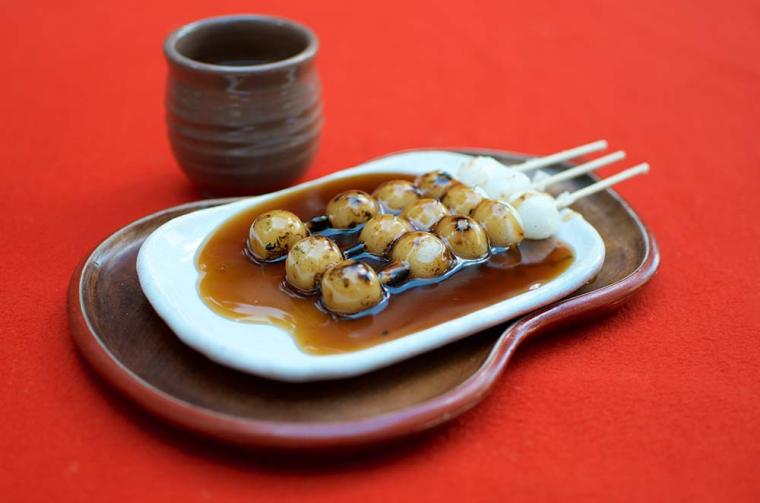
If you have a sweet tooth, after visiting the shrine, be sure to visit Kamo Mitarashi Jaya, the birthplace of Mitarashi dumplings, located on Shimogamo-Hondori Street on the west side of the shrine.
Kitano Tenmangu Shrine
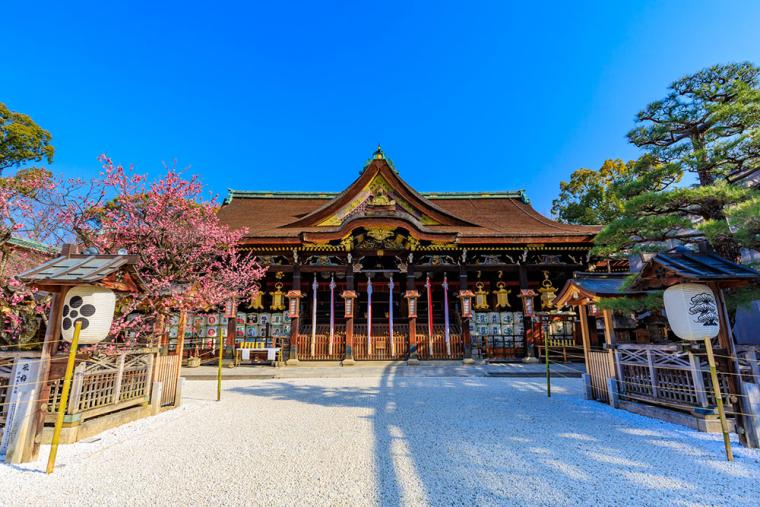
Kitano Tenmangu Shrine is the head shrine of all Tenmangu shrines in Japan dedicated to Sugawara no Michizane, the god of learning. The shrine is revered as the birthplace of the Tenjin faith, and is visited by many students preparing for entrance exams as a god of academic success, martial arts advancement, and protection against calamities and misfortune. The shrine is also famous for its ume plum blossoms, and visitors can enjoy the red and white blossoms around February and March.Hours.6:30-17:00 *Different during New Year’s Day and when the maple garden is illuminated.
Open all year roundChargefreeAccessShort walk from “Kitano Tenmangu-mae” bus stop by city bus from Kyoto Station
5 minutes walk from “Kitano Shiraume-cho” station on Randen Kitano lineaddress (e.g. of house)Bakuro-cho, Kamigyo-ku, Kyoto Cityhome pageKitano Tenmangu Shrine official website
Hall for State Ceremonies (in Heian Palace, Kyoto Imperial Palace, etc.)
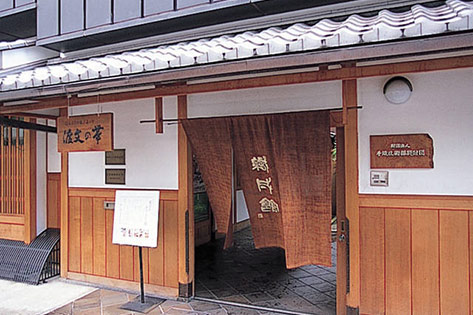
Orinasukan is a museum of hand weaving that stands in a corner of Nishijin, a town of textiles. Visitors can observe the hand-weaving process of Nishijin textiles and the weaving process of obi belts, and hand-woven items from all over Japan are on display. Visitors can also try their hand at weaving by reservation.Hours.10:00-16:00closed dayMondays (open if Monday is a national holiday), Year-end and New Year holidaysadmission feeAdults 500 yen, High school students 400 yen
[Hand weaving experience] 5,000 yen/personAccessFrom Kyoto Station, take the city bus to Senbon Kamidachiuri and walk 5 minutes.
From Keihan or Demachiyanagi Station, take the city bus to “Imadegawa Jofukuji” and walk 5 minutes.address (e.g. of house)693 Daikoku-cho, Jofukuji-dori Kamitachiuri-agaru, Kamigyo-ku, Kyotohome pageOrijikan Hand Weaving Museum official website
Kyoto Gyoen and Kyoto Imperial Palace
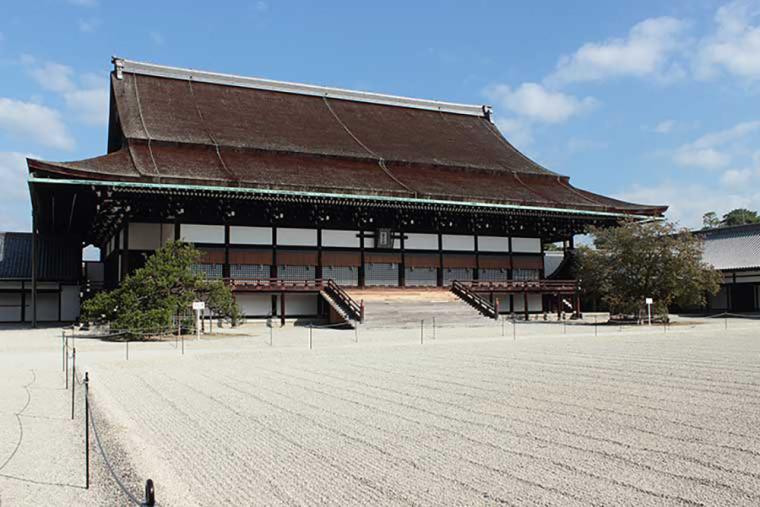
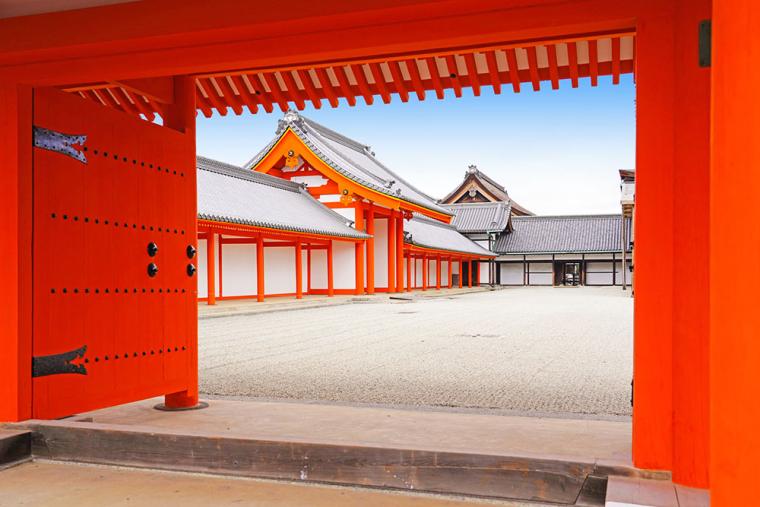
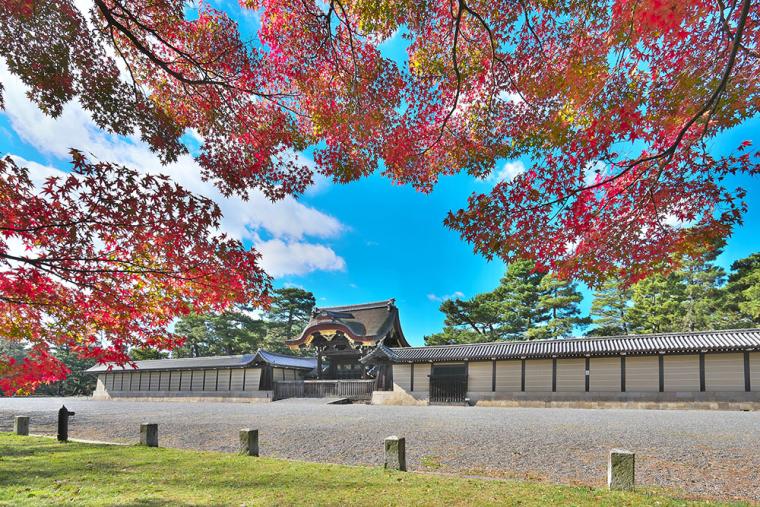
The Kyoto Imperial Garden is a vast park with a circumference of approximately 4 km that surrounds the Kyoto Imperial Palace, where the emperor lived until the Meiji Era (1868-1912). It is said that about 50,000 trees grow in the garden, and visitors can enjoy seasonal plants such as plum blossoms, cherry blossoms, peaches, and autumn leaves any time of the year.
The Imperial Palace is also open to the public free of charge, and visitors can see valuable architectural structures such as Shikinden, where the accession ceremonies of the Meiji, Taisho, and Showa Emperors were held, and Seiryoden, where the Emperors spent their daily lives.Kyoto Gyoenfree admission to a parkKyoto Imperial Palace[April-August] 9:00-17:00
[9:00 – 16:30 [September and March] 9:00 – 16:30
[October – February] 9:00 – 16:00 (last admission 40 minutes before closing time)
Closed on Mondays (or the following day if Monday is a national holiday) and December 28-January 4.ChargefreeAccess5 minutes on foot from “Marutamachi” and “Imadegawa” subway stations
15 minutes on foot from Jingu-Marutamachi Station on the Keihan Lineaddress (e.g. of house)Kyoto Gyoen, Kamigyo-ku, Kyoto Cityhome pageKyoto Gyoen” official website
Gen-rikyu Nijo Castle

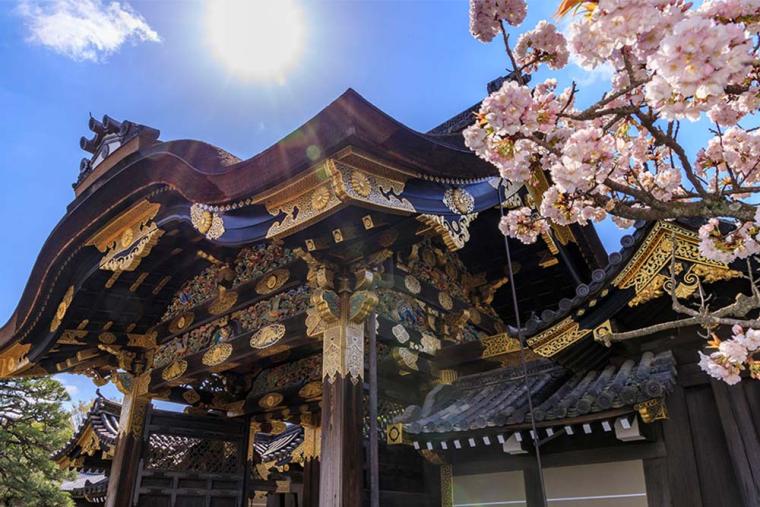
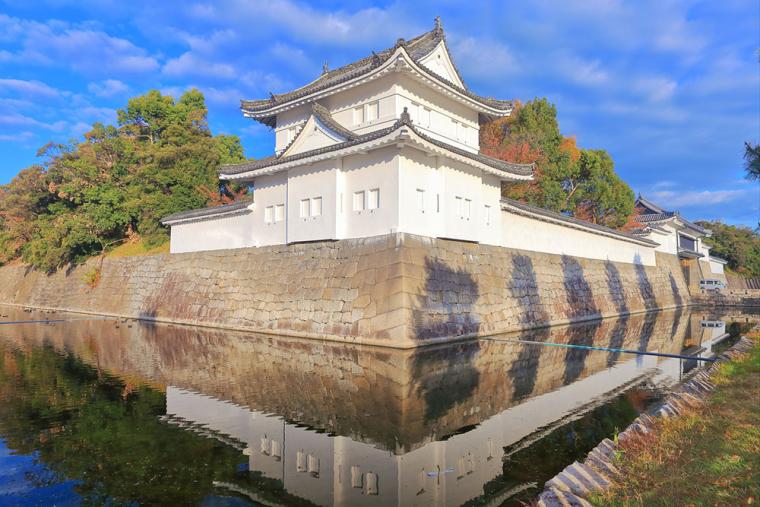
Nijo Castle was built in 1603 by Tokugawa Ieyasu to guard the Kyoto Imperial Palace and provide lodging for shoguns traveling to Kyoto, and was completed by the third shogun, Iemitsu. It is registered as a World Heritage site. The castle’s architecture is a reminder of the power of the Tokugawa family, and the Karamon Gate, with its splendid paintings and carvings, is a must-see. In spring, cherry blossoms bloom throughout the castle, creating a gorgeous atmosphere.Hours.8:45-16:00 (castle closes at 17:00)day on which a castle is closedDecember 29-31
[Ninomaru Palace] Tuesdays in January, July, August, and December (or the following day if a holiday), December 26-28, January 1-3Charge[Admission + Ninomaru Palace: Adults 1,300 yen, Junior high school and high school students 400 yen, Elementary school students 300 yen
[Admission only] Adults 800 yen, Junior high school and high school students 400 yen, Elementary school students 300 yenAccessShort walk from Subway “Nijojo-mae” station
Approx. 17 min. walk from JR “Nijojo” stationaddress (e.g. of house)541 Nijojo-machi, Nijo-dori Horikawa-nishiiru, Nakagyo-ku, Kyotohome pageNijo Castle” official website
5] Around Kinkakuji Temple
This is a must-see area for sightseeing in Kyoto where three World Heritage Sites including Kinkakuji Temple are located. Take time to enjoy the beautiful temples and gardens!
Kinkakuji Temple (Rokuonji Temple)
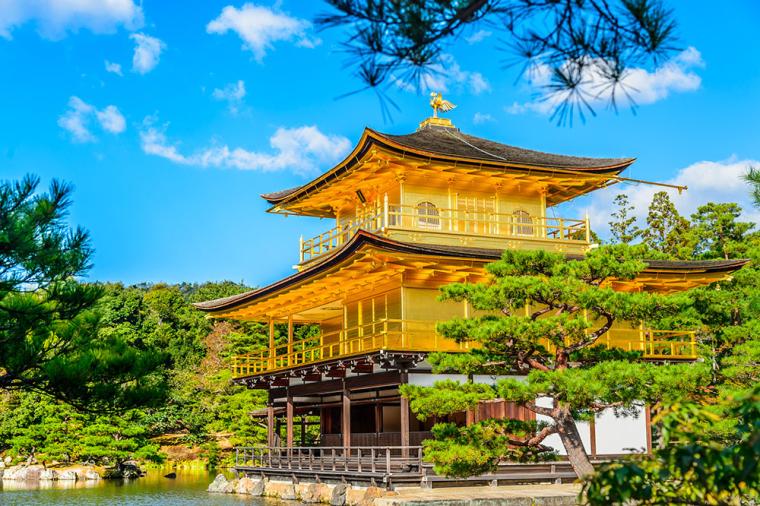
The temple of the Shokokuji sect of the Rinzai Sect of Zen Buddhism, known as “Kinkakuji” but officially called “Rokuonji,” has a different architectural style for each of its three levels, and its appearance, with approximately 200,000 sheets of gold leaf, is a beauty that attracts attention from all over the world. It is registered as a World Heritage site. If you are visiting Kyoto for the first time, this is a classic spot that you should not miss.Hours.9:00-17:00
Open all year roundChargeHigh school students and older: 500 yen, elementary and junior high school students: 300 yenAccessShort walk from Kinkakuji-michi bus stop by city bus from Kyoto Station.address (e.g. of house)1 Kinkakuji-cho, Kita-ku, Kyoto Cityhome pageKinkakuji Temple Official Website
Ninna-ji Temple

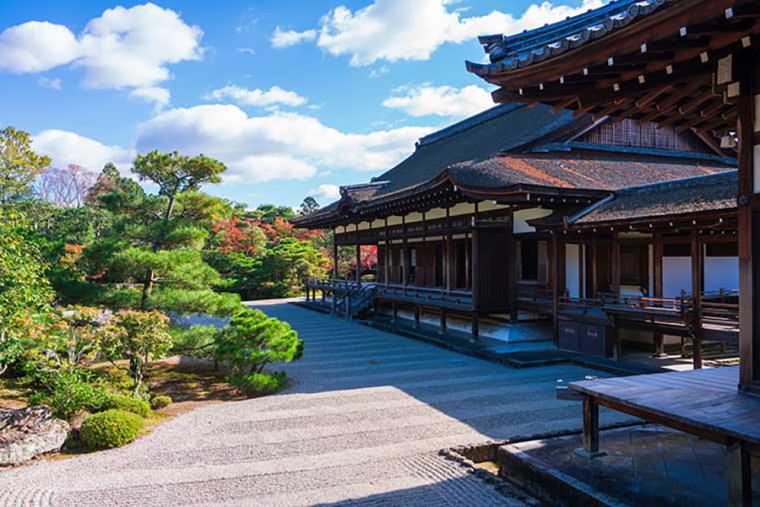
Ninna-ji Temple, one of the World Heritage sites, is the head temple of the Omuro school of Shingon Buddhism. The temple is lined with numerous halls and towers, including the Kondo (Golden Hall), a national treasure, Nioimon Gate on either side of which a statue of Kongorikishi is enshrined, a palace, and a five-story pagoda.
In spring, the famous Omurozakura (Omuro-zakura) cherry blossoms bloom, which are the late blooming cherry trees in Kyoto.Hours.[March – November] 9:00 – 17:00
[Dec. to Feb.] 9:00 – 16:30 (closing time is 30 minutes before the opening time)
Open all year roundCharge[Gosho Garden] 800 yen for adults, free for high school students and youngerAccess3 minutes walk from Omuro Ninnaji Station on the Randen Kitano Lineaddress (e.g. of house)33 Omuro-Ouchi, Ukyo-ku, Kyoto City, Kyotohome pageNinna-ji Temple Official Website
Ryoanji Temple
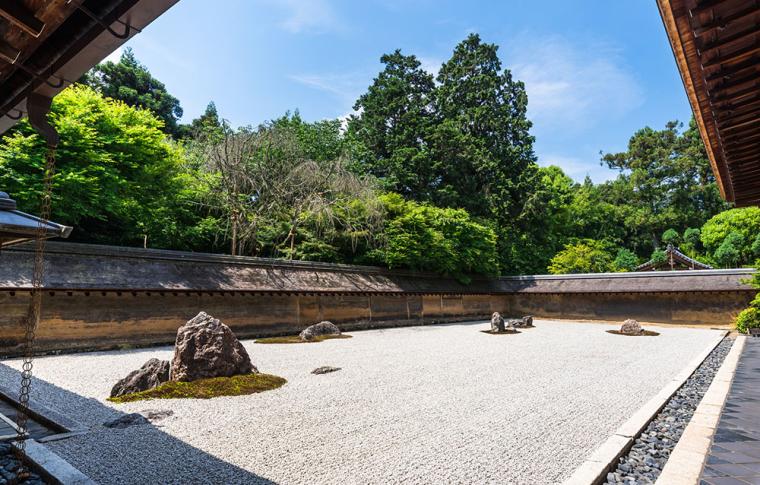
Ryoan-ji Temple, a famous Zen Buddhist temple famous for its stone garden. This temple is also registered as a World Heritage site. The beautiful karesansui (dry landscape) garden is surrounded by a 75-square-meter (1,200-square-foot) Tsukiji wall and consists of only 15 stones and white sand. 15 stones cannot all be seen at once, and the wall is lowered toward the back to take advantage of perspective.Hours.[March – November] 8:00 – 17:00
[December – February] 8:30 – 16:30
Open all year roundChargeAdults 500 yen, high school students 600 yen, elementary and junior high school students 300 yenAccessFrom Kyoto Station, take city bus to Ritsumeikan Daigaku-mae (Ritsumeikan University) and walk about 7 minutes.
From Keihan-Sanjo Station, take city bus to Ryoanji-mae stop.
From Ryoanji Station on the Randen Kitano Line, approx. 7 min. walkaddress (e.g. of house)13 Goryoshita-cho, Ryoanji, Ukyo-ku, Kyotohome pageRyoanji Temple Official Website
road less traveled by bicycle, motorcycle, etc. when traveling (travelling)
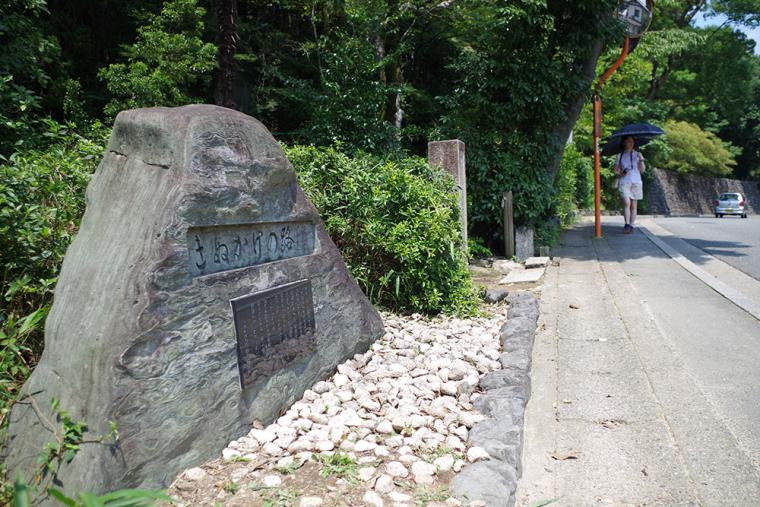
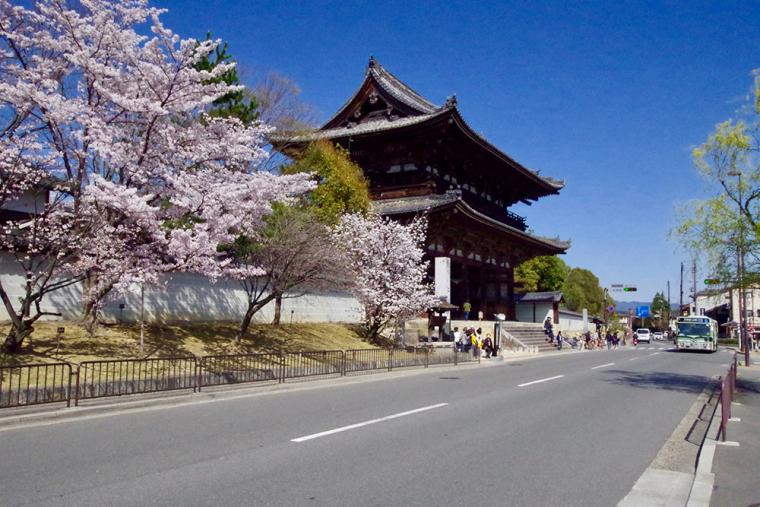
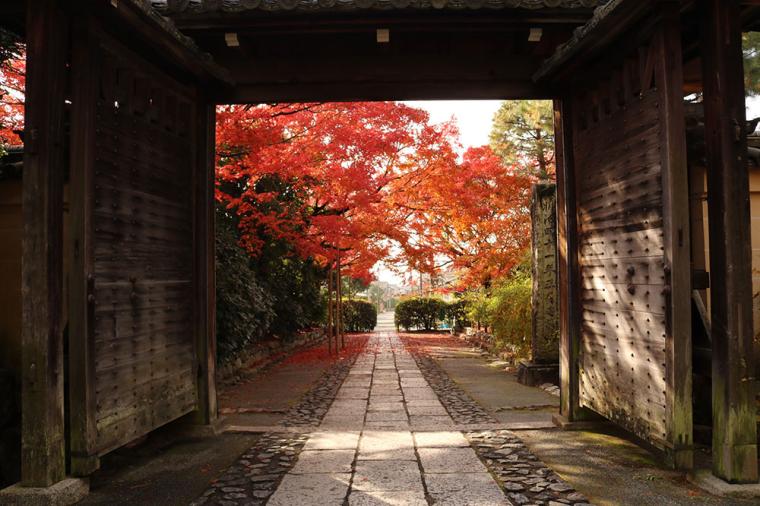
This 2.5-km path connects the three World Heritage sites of Kinkakuji, Ryoanji, and Ninnaji. In addition to temples and shrines such as Toji-in Temple and Myoshin-ji Temple, there are many restaurants and cafes in the area, making it a great place to take a stroll and tour the World Heritage sites.home pageKyoto Kinukake-no-michi” official website
Imamiya Shrine
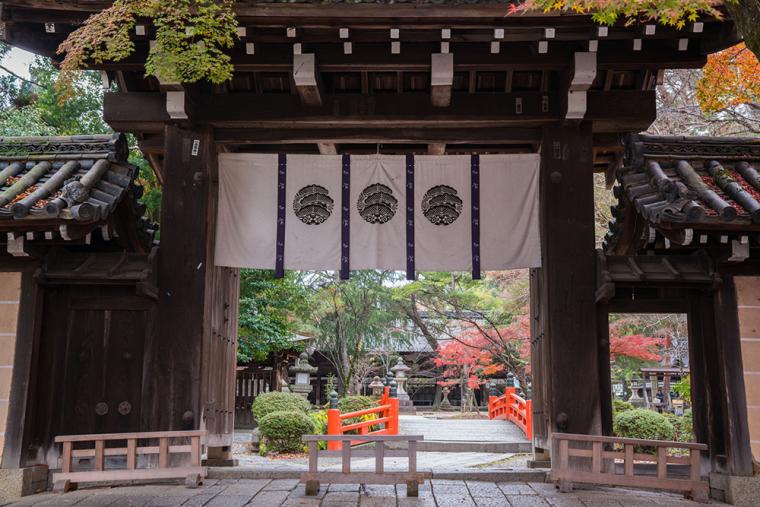
Imamiya Shrine is also known as “Tamanokoshi Shrine. Its name is derived from the Cinderella story of Otama, the daughter of a Nishijin grocer who was born here, who became the wife of Tokugawa Shogun Iemitsu and later gave birth to Tsunayoshi, the fifth Shogun of the Tokugawa dynasty. It is also believed to be the origin of the term “tama-no-oshi.
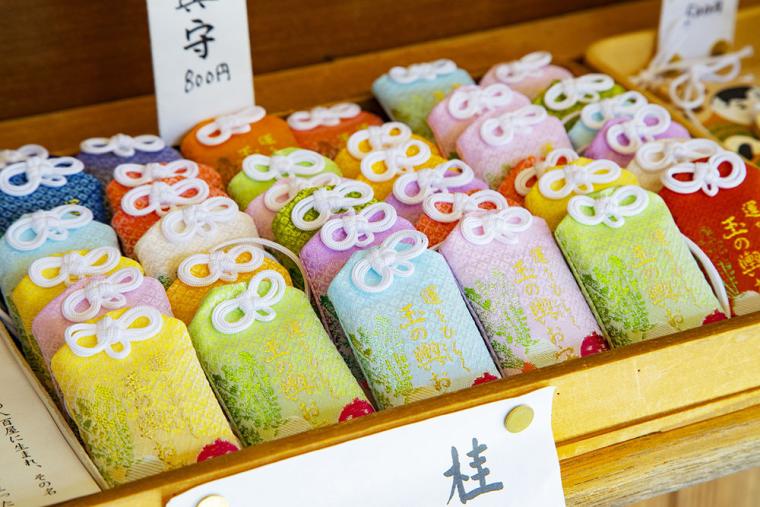
There is also a “Tamanokoshi Mamori” at the shrine office, depicting vegetables such as Kyoto turnips and Kyoto carrots, in reference to Otama-san, who was born in a grocery store. Those who wish for a good marriage should definitely visit the shrine and leave with a good luck charm.
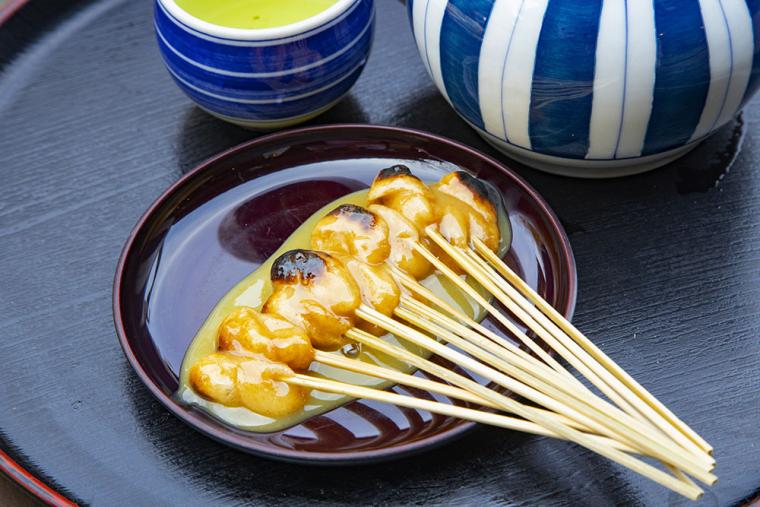
After visiting the shrine, don’t miss the famous aburi mochi. It is a seared rice cake topped with white miso sauce and available at places such as Kazariya, located just outside the east gate.Hours.24 hours a day, 7 days a week
[Shrine Office] 9:00-17:00ChargefreeAccessFrom Kyoto Station, take city bus to “Funaokayama” and walk about 7 minutes
From Hankyu/Karasuma Station, take city bus to Imamiya-jinja-mae stop.address (e.g. of house)21, Shino Imamiya-cho, Kita-ku, Kyoto, Japanhome pageImamiya Shrine official website
6】Arashiyama・Sagano
The area once flourished as a vacation home for aristocrats. As one of the most scenic spots in Kyoto, the area attracts many tourists.
Watarizukibashi Bridge (between Tokyo and Yokohama)
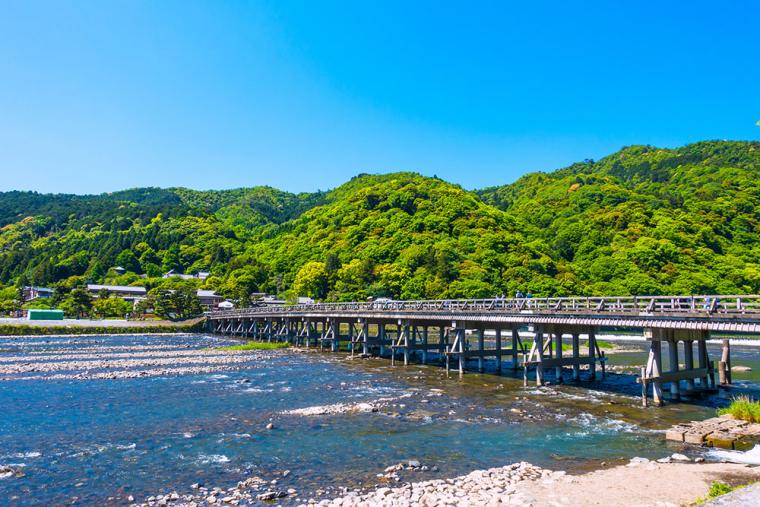
Togetsu Bridge, the symbolic bridge of Arashiyama, spans the Oigawa River. With Arashiyama in the background, visitors can enjoy the magnificent seasonal views of cherry blossoms in spring and autumn leaves in fall. In summer, traditional cormorant fishing can be seen. We also recommend taking a relaxing tour on a yakatabune (houseboat) to enjoy the beautiful scenery.Access3 minutes walk from Randen “Arashiyama” station
5 minutes walk from Hankyu “Arashiyama” stationaddress (e.g. of house)Arashiyama, Ukyo-ku, Kyoto
Bamboo grove path
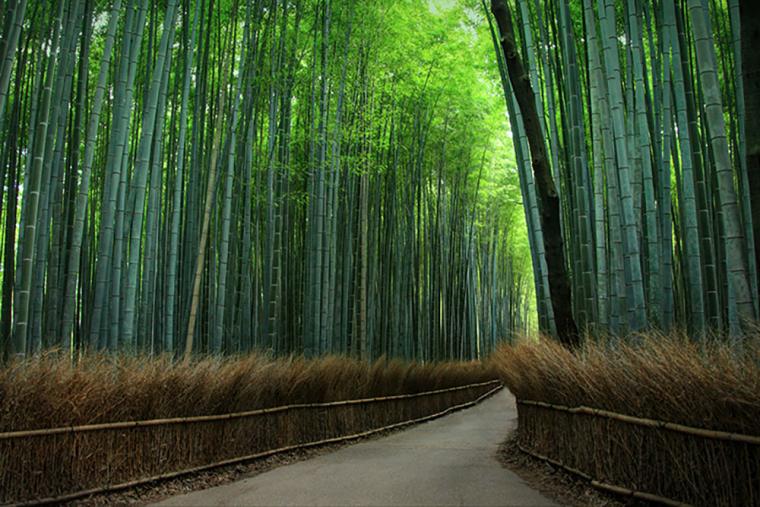
This path, lined with bamboo on both sides, leads from Nomiya Shrine to Okochi Villa and is one of the most popular sightseeing spots in Arashiyama. The sound of leaves rustling in the wind is pleasant, and the refreshing green foliage and sunlight filtering through the trees create a magical atmosphere that is almost otherworldly.Access10 minutes on foot from Randen “Arashiyama” station
13 minutes on foot from JR Saga-Arashiyama Stationaddress (e.g. of house)Sagano-baba-cho, Tenryuji, Ukyo-ku, Kyoto City, Kyoto
Nomiya Shrine
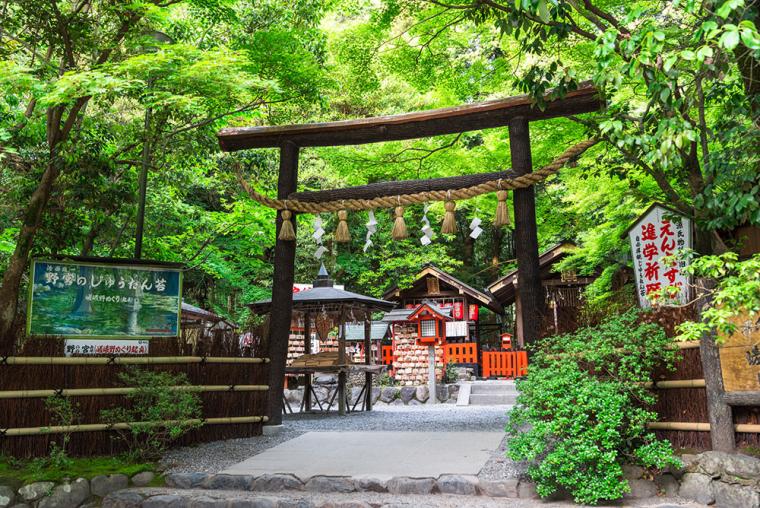
Surrounded by greenery at the starting point of a bamboo grove path, the shrine is said to be beneficial for matchmaking and fertility. The sacred stone, called “Okameishi” because of its turtle shape, is said to grant wishes within a year if you stroke it. It is also known as a shrine associated with “The Tale of Genji.Hours.9:00~16:30ChargefreeAccess8 minutes walk from Randen “Arashiyama” station
Approx. 10 minutes walk from JR Saga-Arashiyama Stationaddress (e.g. of house)1 Saganomiya-cho, Ukyo-ku, Kyoto City, Kyotohome pageNomiya Shrine” official website
Tenryuji Temple
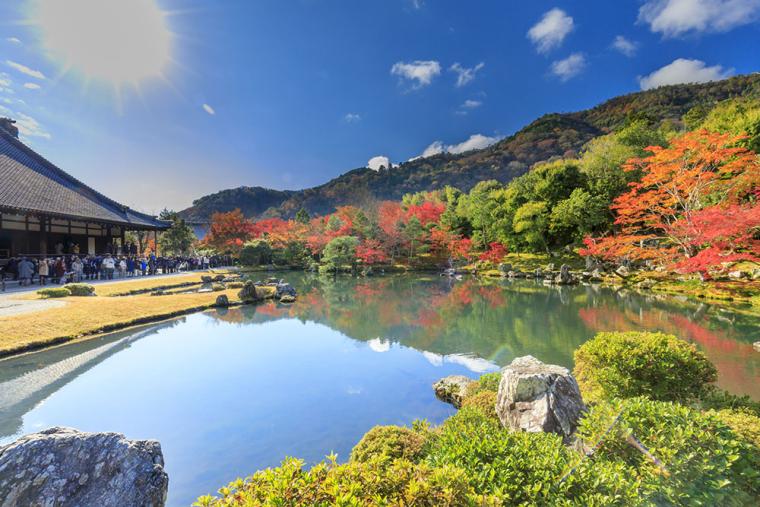
Tenryuji Temple, a Zen temple of the Rinzai sect, once included Arashiyama, Togetsu Bridge, and Kameyama Park, which stretches to the west of Tenryuji Temple, as part of its precincts. Due to repeated large fires and the Jochi Decree, the temple is now only one-tenth the size it was at that time. The “Sogenchi” garden, which retains its original form, is a pond garden with a view of Kameyama and Arashiyama, and was designated as Japan’s first historic site and a place of special scenic beauty. It is also one of the World Heritage Sites.
The “Dragon and Cloud” painted by Matazo Kayama on the ceiling of the Hatto Hall can be seen on Saturdays, Sundays, national holidays, and every day during special visitation periods in spring, summer, and fall.Hours.[Garden] 8:30-17:00 (last admission at 16:50)
[Main Hojo, Shoin, and Tahouden] 8:45-16:45 (last admission at 16:30)
[Unryu] 9:00-16:30 (last admission at 16:20)Charge[Garden] 500 yen for high school students and older, 300 yen for elementary and junior high school students
[Daihojo, Shoin, and Dahouden: 300 yen in addition to the garden fee.
[Unryu] 500 yen (not included in the above fees)AccessShort walk from Randen “Arashiyama” station
13 minutes on foot from JR Saga-Arashiyama Station
15 minutes on foot from Hankyu “Arashiyama” station
Short walk from “Arashiyama Tenryuji-mae” or “Keifuku Arashiyama Eki-mae” bus stop by city busaddress (e.g. of house)68, Sagano-baba-cho, Tenryuji, Ukyo-ku, Kyoto City, Kyotohome pageTenryuji Temple Official Website
Kuruma-ori Shrine
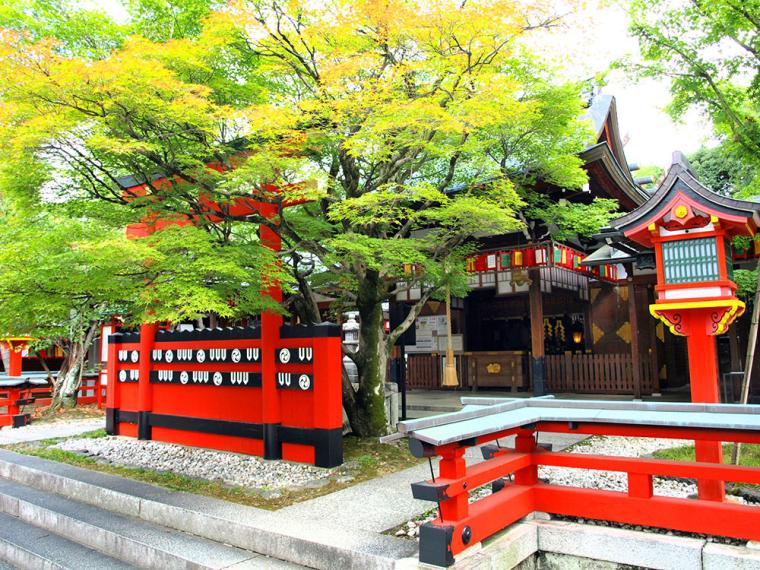
Kurumazaki Shrine is dedicated to the god of money, good fortune, academics, and the performing arts. The name of the shrine comes from the fact that the axle of Emperor Gosaga’s ox cart broke and got stuck in front of the shrine.
It is said that if you receive a “Prayer Stone” at the shrine office, make a strong wish in front of the main shrine, and carry it with you every day, you will receive a blessing. When your wish is fulfilled, you are supposed to write a word of thanks on a stone you picked up at home or in the sea, a river, or a mountain, and return the stone to the main shrine. The stones are piled up in front of the main shrine.
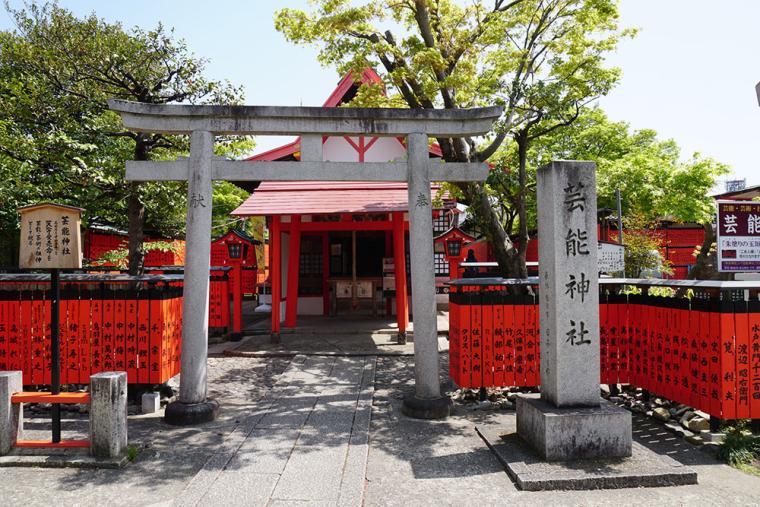
And the “Entertainment Shrine” on the grounds is famous for the many entertainers who visit the shrine to pray. From Johnny’s and EXILE to actresses, comedians, idols, and voice actors, you can see tamagaki dedicated by entertainers.Hours.9:30-17:00
Open all year roundChargefreeAccessShort walk from Randen “Kurumaori Jinja” station
Short walk from Kumaori Jinja-mae bus stop by Kyoto Bus from Kyoto Station.address (e.g. of house)23, Saga-Asahi-machi, Ukyo-ku, Kyoto City, Kyotohome pageKurumaori Shrine official website
Toei Movie Village
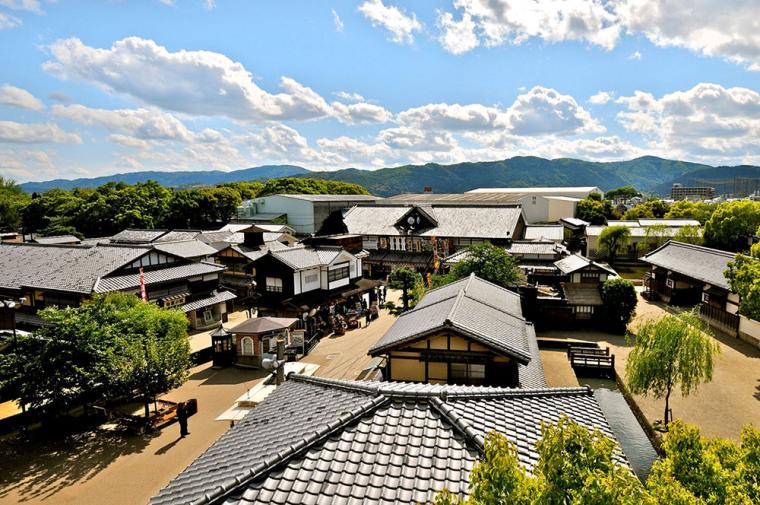
Toei Uzumasa Movie Village is a movie theme park focusing on period dramas. There is a set that recreates an Edo town, and if your timing is good, you may be able to see a movie or television production being filmed.
Various hands-on programs are also popular, including a ninja show, chanbara tsuji shinan, a sword fighting experience directly taught by professional actors, and a makeover experience where you can wear the same makeup as the actors and become a samurai or princess. Toei’s special effects hero shows are also held for children’s enjoyment.Business Hours9:00-17:00 (Entry to the village until 1 hour before)
*Depends on the season.ChargeAdults 2,400 yen, Junior high and high school students 1,400 yen, Children (3 years and older) 1,200 yenAccess5 minutes on foot from Randen “Ohata-Koryuji” station
13 minutes on foot from JR Hanazono Station
12 minutes on foot from “Hadatenjingawa” station on the Subway Tozai lineaddress (e.g. of house)10, Ohata Higashi Beeoka-cho, Ukyo-ku, Kyoto, Japanhome pageToei Kyoto Movie Village official website
Saiho-ji Temple (moss temple)
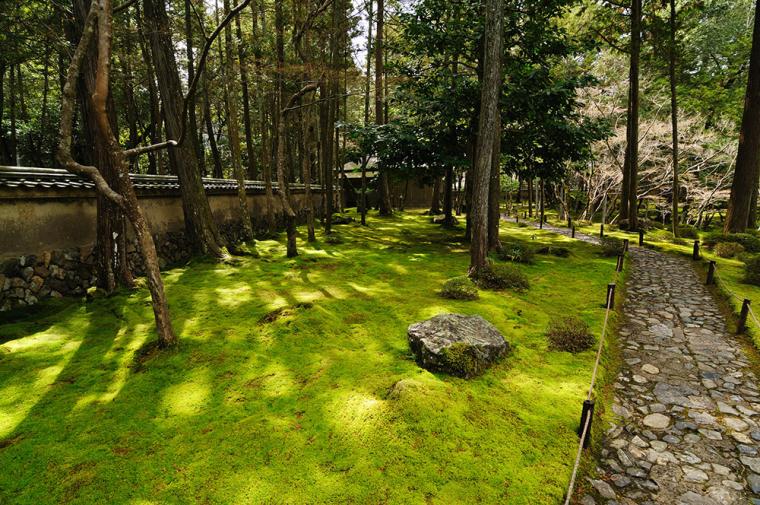
Saiho-ji Temple is famous for its beautiful garden covered with more than 120 species of moss, and is also known by the nickname “Kokedera” (moss temple). This temple is also a World Heritage Site. Advance registration is required to visit the temple. On the day of the tour, visitors will do sutra chanting in the main hall, followed by a visit to the garden.How to visitAdvance registration online or by return postcard is required.
Children under elementary school age are not allowed to visit.Hours.Time cannot be specified (usually, the gate opens only in the morning)Charge3,000 yen or moreAccessFrom Kyoto Station or Arashiyama, take Kyoto Bus to “Koke-dera/Suzumushiji” and walk 3 minutes.address (e.g. of house)56, Matsuo Kamigayacho, Nishikyo-ku, Kyoto City, Kyotohome pageSaiho-ji Temple (Koke-ji Temple) official website
Sagano Trolley Train
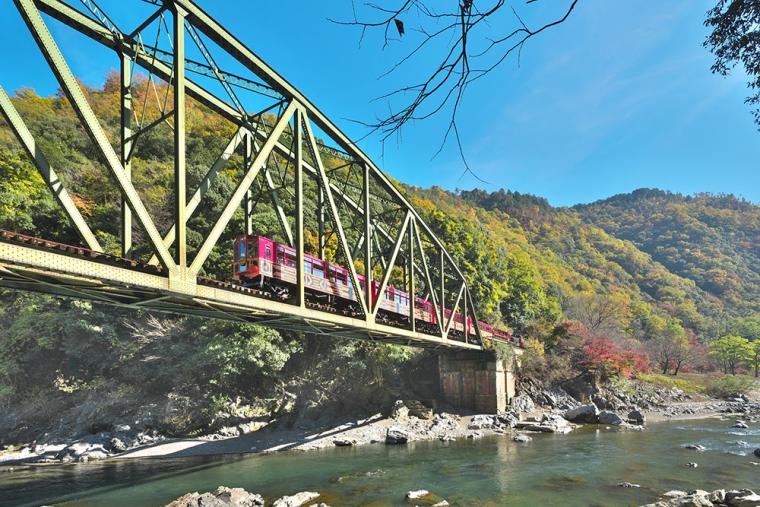
This sightseeing railroad runs between Saga and Kameoka Stations, utilizing 7.3 km of the line that was closed when the JR Sagano Line (Sanin Line) was double-tracked. From the windows of the train, which runs slowly for about 25 minutes, you can enjoy the view of Hozukyo in each of the four seasons: cherry blossoms in spring, fresh greenery in summer, autumn leaves in fall, and dry fields and snowy landscape in winter. The open car “The Rich” (No. 5), which has no windows, is very popular.Fare (one way)Adults (12 years old and over): 880 yen, Children (6 years old and over, under 12): 440 yenhome pageTrolley Train Sagano Kanko Railway official website
Hozu River Rafting (Hozukyo)
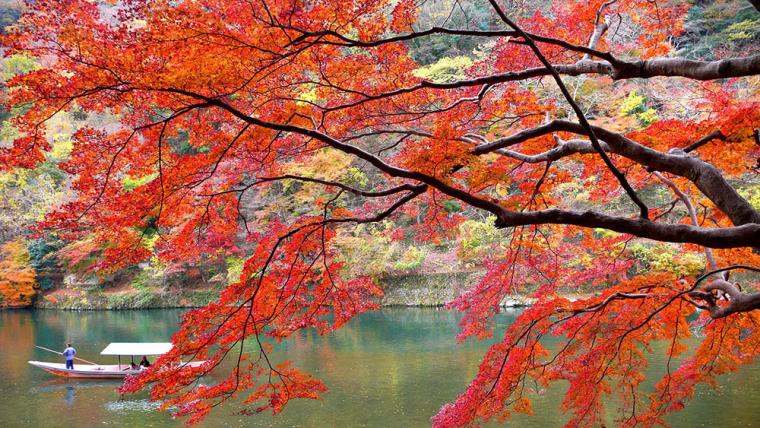
The “Hozu River Rafting” takes about two hours to travel down the 16-km gorge from Kameoka to Arashiyama on a boat operated by a boatman. The boat ride is a thrilling experience as it splashes through the giant and oddly shaped rocks. The beauty of the valley, colored with cherry blossoms and autumn leaves, is also exceptional. In winter, there are oil heaters to keep you warm.timeDeparts every hour from 9:00 to 15:00 (Departs as soon as capacity is reached on weekends and holidays)
*Different in winterChargeAdults 4,500 yen, Children (4 years old to elementary school students) 3,000 yenAccess (boat boarding area)Approximately 8 minutes on foot from “Kameoka” station on the JR Sagano Line
From Sagano Trolley Train “Trolley Kameoka” Station, take Keihan Kyoto Kotsu Bus (approx. 15 min.) and get off at “Hozu River Downstream Boarding Area Mae”.address (e.g. of house)2 Shimonakajima, Hozu-cho, Kameoka Cityhome pageHozugawa Rafting” official website
7] Kyoto Station Area
Around Kyoto Station, the gateway to travel, you will find many family-friendly spots such as Kyoto Tower and Kyoto Aquarium. The Kyoto Station Building is also not to be missed.
Kyoto Station Building
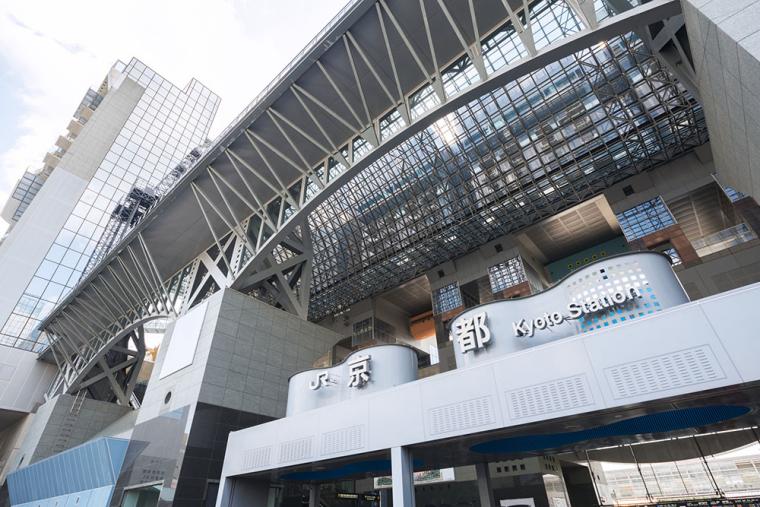
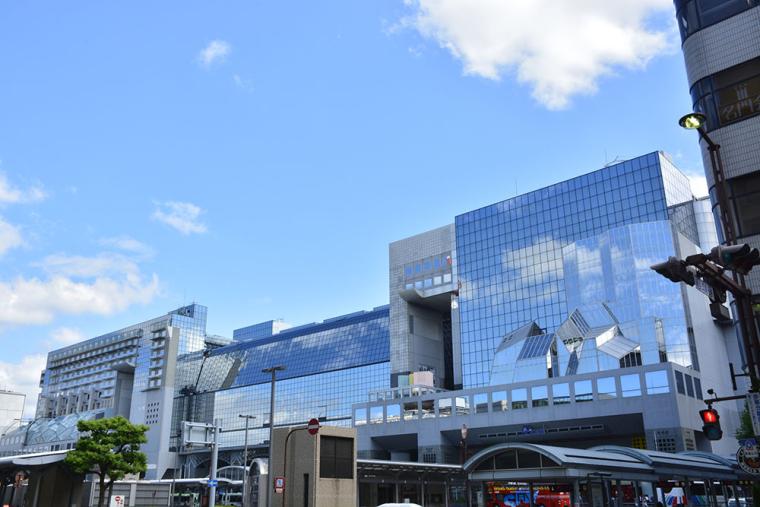
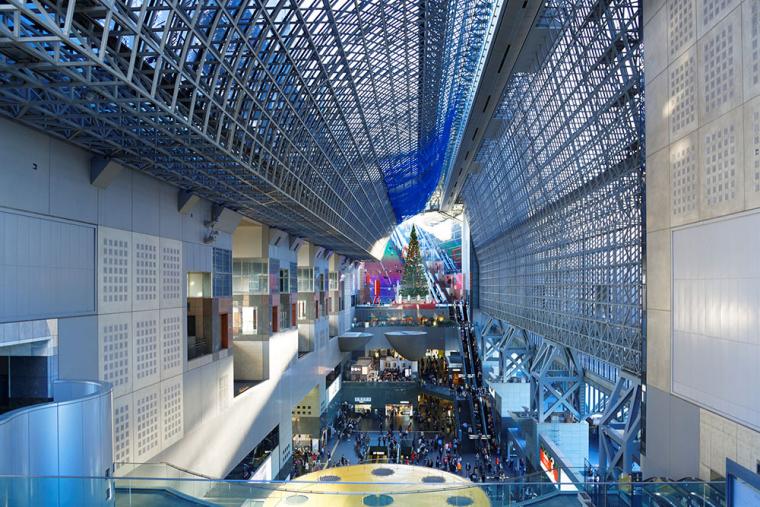
The current station building, which opened in 1997, is one of the largest station building facilities in Japan. It also serves as a large-scale complex with hotels, department stores, cultural facilities, and other facilities.
In addition to a wide selection of Kyoto sweets and boxed lunches in the basement of JR Kyoto Isetan, there are also many general stores and restaurants in the station building, making it very convenient to enjoy Kyoto’s gourmet food and select souvenirs until just before you leave on your trip.address (e.g. of house)Higashi Shiokoji-cho, Shiokoji-sagaru, Karasuma-dori, Shimogyo-ku, Kyotohome pageKyoto Station Building official website
Kyoto Tower
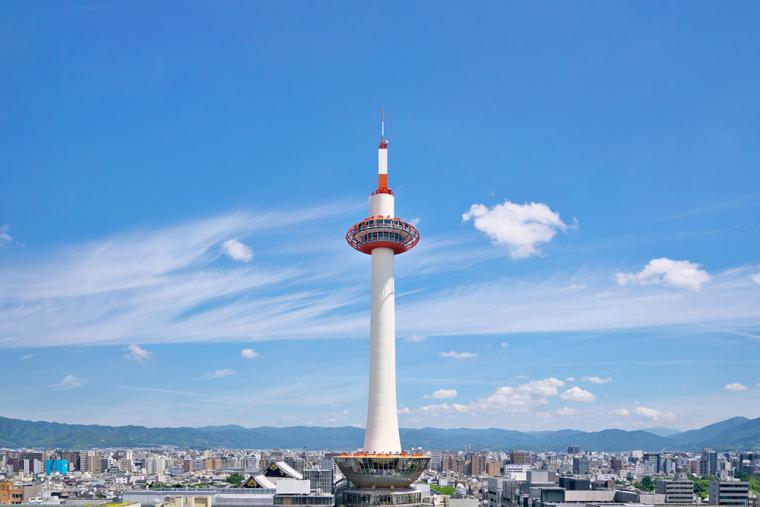
This landmark of Kyoto is the first thing you see when you get off at Kyoto Station. The 131-meter-high tower was built in the image of a lighthouse, and from its observation deck 100 meters above ground level, visitors can enjoy a 360-degree panoramic view of the entire city of Kyoto. In addition, restaurants and stores selling Kyoto sweets are clustered at the foot of the tower.observation room[Business hours] 10:30 – 21:00 (last admission 20:30) *Subject to change.
[Fees] Adults 900 yen, High school students 700 yen, Elementary and junior high school students 600 yen, 3 years old and up 200 yenAccess2 minutes walk from “Kyoto” station (directly connected to Kyoto station underground passageway)address (e.g. of house)721-1 Higashishiokoji-cho, Shichijo-sagaru, Karasuma-dori, Shimogyo-ku, Kyotohome pageKyoto Tower official website
Kyoto Aquarium
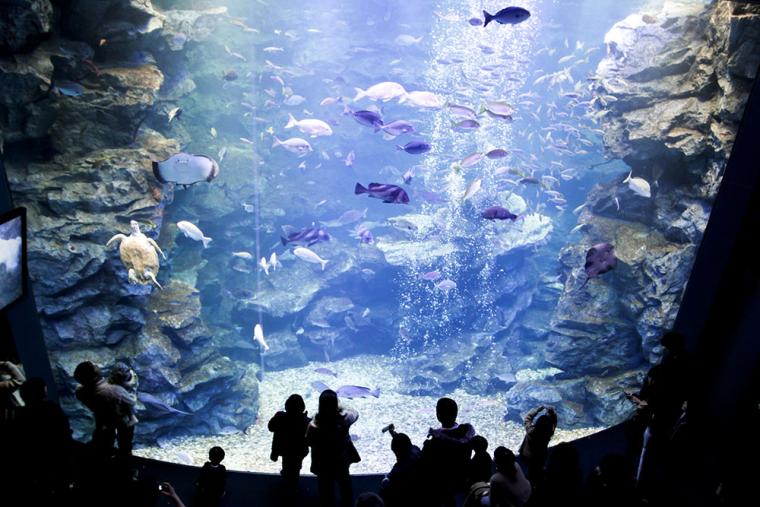
Japan’s first large-scale inland aquarium. Visitors can view aquatic life while feeling close to the historical climate of Kyoto. The aquarium also has an exhibit of a natural ecosystem that reproduces a satoyama, making you forget that you are in the center of Kyoto.
In 2020, a new area, “Jellyfish Wonder,” will feature 5,000 jellyfish of about 20 species, the largest number in western Japan. This is a great spot to enjoy with children or on a date.Hours.[Weekdays] 10:00-18:00
[Weekends and holidays] 10:00-20:00
[GW, summer vacation, etc.] 9:00 – 20:00
Varies depending on the day.closed dayopen every day of the yearChargeAdults 2,400 yen, High school students 1,800 yen, Elementary and junior high school students 1,200 yen, 3 years and older 800 yenAccess15 minutes on foot from “Kyoto” station
Approximately 7 minutes on foot from “Umekoji Kyoto Nishi” station on the JR Sanin Honsen lineaddress (e.g. of house)35-1 Kanki-ji-cho, Shimogyo-ku, Kyoto (in Umekoji Park)home pageKyoto Aquarium official website
Kyoto Railway Museum
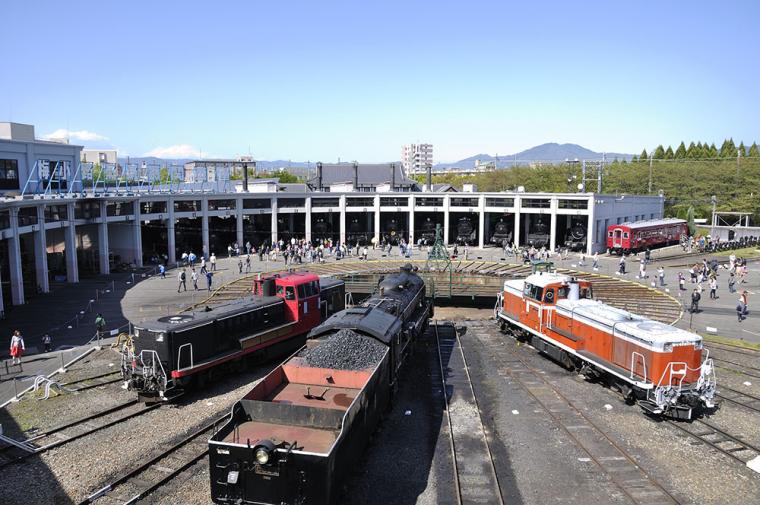
It opened in April 2016 with the concept of “a center of railroad culture that walks with the local community. It offers a variety of exhibits for both children and adults, including the “SL Steam” exhibit, which allows visitors to experience riding in a passenger car pulled by a real SL, a driving simulator, a railroad diorama, and exhibits of valuable rolling stock.Hours.10:00-17:00 (last admission 16:30)closed dayWednesdays (open on national holidays, spring vacation, summer vacation, etc.), year-end and New Year holidaysChargeAdults 1,500 yen, High school and college students 1,300 yen, Elementary and junior high school students 500 yen, 3 years old and up 200 yenAccessApprox. 20 minutes walk from JR “Kyoto” station
Approx. 2 minutes on foot from Umekoji-Kyoto Nishi Station on the JR Sanin Honsen Lineaddress (e.g. of house)Kankiji-cho, Shimogyo-ku, Kyotohome pageKyoto Railway Museum official website
Higashi Hongwanji Temple
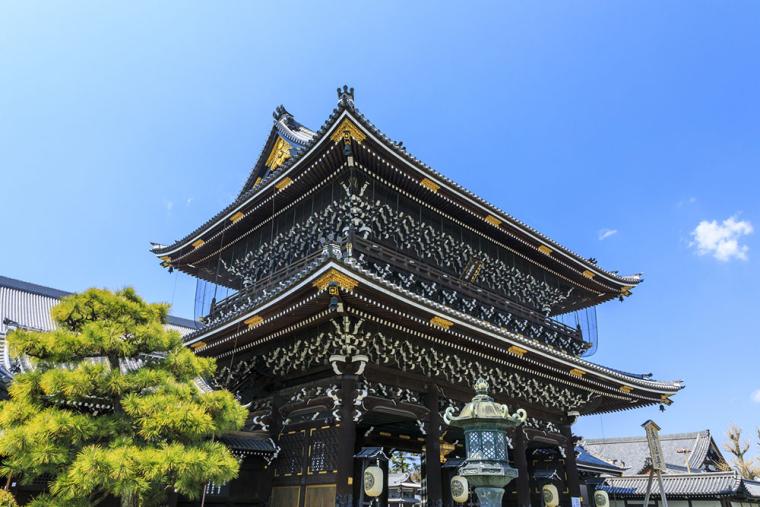
Higashi Honganji Temple is the head temple of the Otani sect of Shinshu Buddhism. The “Goeido,” where Shinran Shonin’s image is enshrined, is one of the largest wooden structures in the world at 76 x 58 meters and 38 meters high, and its size is overwhelming. The “Mikado-mon Gate,” which rises in front of the Mikado, is also one of the world’s largest wooden gates. It is said to be the tallest double wooden gate in Japan.Hours.[March – October] 5:50 – 17:30
[November – February] 6:20 – 16:30ChargefreeAccess7 minutes walk from “Kyoto” station
5 minutes on foot from Gojo Station on the Subway Karasuma Lineaddress (e.g. of house)Shichijo Agaru, Karasuma Dori, Shimogyo-ku, Kyoto City, Kyotohome pageHigashi Hongwanji Temple Official Website
Nishi Hongwanji Temple
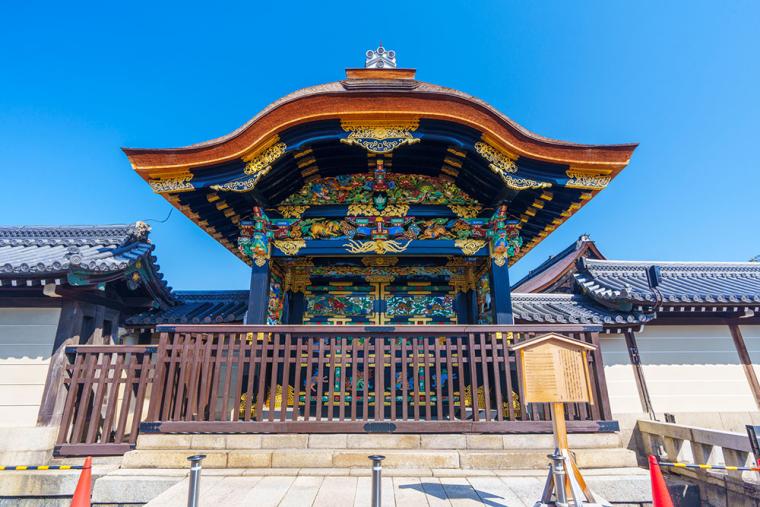
Nishi Honganji Temple is the head temple of the Honganji sect of the Jodo Shinshu sect, founded by Shinran Shonin. There are many national treasures, including the Karamon Gate with its hiwadabuki cypress bark roof and magnificent carvings of karahafu (Chinese lanterns), the three-story Hounkaku Pavilion, which is one of the three most famous pavilions in Kyoto along with Kinkaku and Ginkaku, and the Mikageido, which is amazing for its size and the glittering decoration inside. It is also registered as a World Heritage site.Hours.5:30 – 5:00 p.m.ChargefreeAccess15 minutes walk from “Kyoto” station
Short walk from Nishi-honganjimae bus stop by city bus from Kyoto Station.address (e.g. of house)Honganji-monzenmachi, Hanaya-cho-sagaru, Horikawa-dori, Shimogyo-ku, Kyotohome pageNishi Hongwanji Temple Official Website
Toji Temple
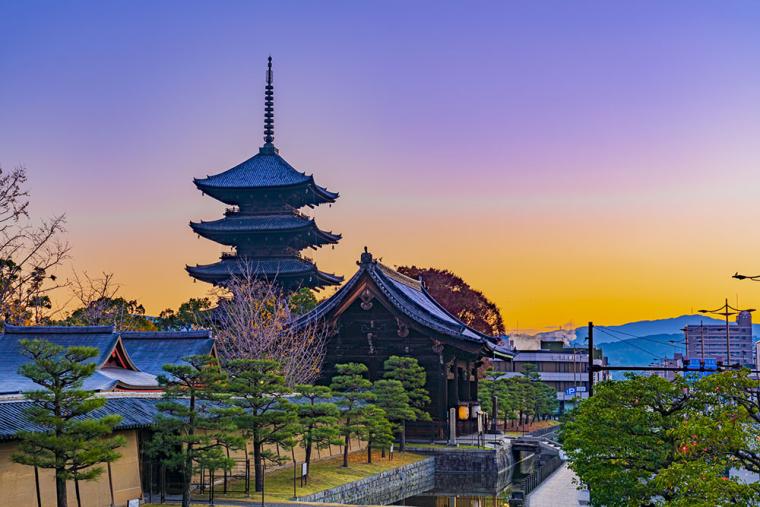
Toji Temple, the head temple of the Shingon sect of Buddhism. It is the only existing remains of the Heian-kyo capital and is one of the World Heritage sites. The five-story pagoda, the symbol of To-ji Temple, is the tallest wooden structure in Japan.
It is also famous for its cherry blossoms and autumn leaves, and is illuminated at night during the season. The interior of the first floor of the five-story pagoda and the Treasure House can be seen only during special openings and special visits.Hours.[Kondo and Auditorium] 8:00 – 17:00
[Treasure House, Kanchiin] 9:00-17:00 (open until 30 minutes before)
Open all year roundCharge[Kondo, Kodo, Gojuno-to, Treasure House, Kanchiin, etc.] Free
[Kondo, Auditorium, Five-storied Pagoda, Treasure House, Kanchiin, etc.] Payable *Varies according to the season.Access15 minutes on foot from “Kyoto” station
10 minutes on foot from “Toji” station on the Kintetsu lineaddress (e.g. of house)1 Kujo-cho, Minami-ku, Kyoto, Japanhome pageToji Temple Official Website
Tofukuji Temple

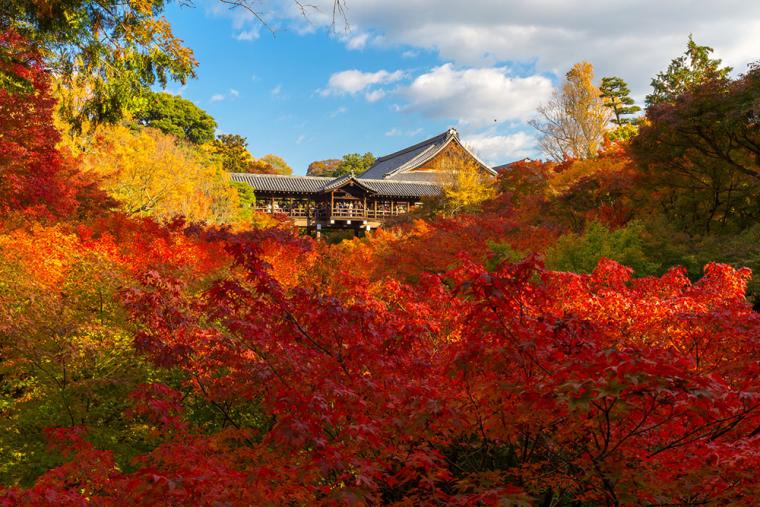
Located at the foot of Mt. Tsukinowayama, Tofukuji Temple is the head temple of the Tofukuji School of the Rinzai Sect of Zen Buddhism. The main deity is Shakyamuni Buddha, and the temple has a vast temple complex and pagodas. Known for its beautiful autumn foliage, the temple grounds are home to approximately 2,000 maple trees, and the view from the Tsutenkyo Bridge is particularly breathtaking.Hours.[April-October] 9:00-16:00
[The first Sunday of November through December] 8:30 – 16:00
[The first Monday in December through March] 9:00 – 15:30 (the gate closes 30 minutes after each Monday)
Open all year roundCharge[Tsutenkyo Bridge and Kaisando-Hall: Adults 600 yen, Junior high school and elementary school students 300 yen
[Tofukuji Honbo Garden (Hojo)] 500 yen for adults, 300 yen for elementary/junior high school and junior high school students
[Common admission ticket] 1,000 yen for adults, 500 yen for elementary/junior high school and junior high school students.
Adults 1,000 yen, Junior high school and high school students 500 yenAccess10 minutes walk from JR/Keihan “Tofukuji” station
10 minutes walk from Toba-kaido Station (Keihan)address (e.g. of house)15-778 Honmachi, Higashiyama-ku, Kyotohome pageTofukuji Temple Official Website
8】 Fushimi and Uji
Fushimi has developed through sake brewing, and Uji is known for its Uji tea. These areas have a slightly different atmosphere from the central area of Kyoto, with a more relaxed atmosphere.
Fushimi Inari-taisha shrine (in Kyoto)

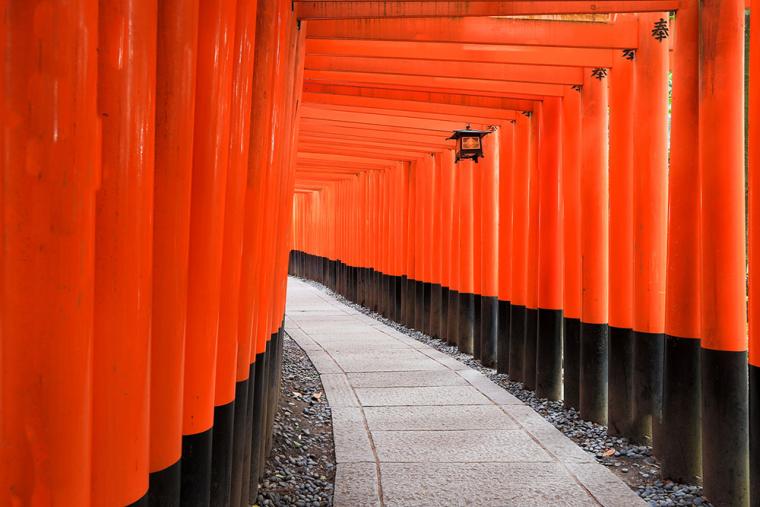
This is the main shrine of the Inari Shrines, which are worshipped as the god of prosperity and good harvests, and are numbering as many as 30,000 throughout Japan. The “Senbon-torii,” a series of vermilion torii gates that have been dedicated to the shrine, is a sight to behold. In recent years, the shrine has become a very popular tourist spot visited by many foreign tourists.
At “Omogaruseki”, located beyond the Senbon-torii gate, visitors make a wish in front of the stone lantern and lift up the stone at the head of the lantern; if it is lighter than expected, the wish will come true; if it is heavier, it will not.Hours.24 hours a day, 7 days a week
Open all year roundChargefreeAccessShort walk from JR “Inari” station
5 minutes walk from Keihan “Fushimi Inari” stationaddress (e.g. of house)68 Yabunouchi-cho, Fukakusa, Fushimi-ku, Kyotohome pageFushimi Inari Taisha official website
Gekkeikan Okura Memorial Hall

This sake museum is housed in a sake brewery built by Gekkeikan in the Meiji period. Inside the stately building, the sake brewing process and tools are exhibited, and visitors can learn about the sake culture of Fushimi, Kyoto. After the tour, visitors can enjoy sake tasting, including ginjo-shu. Sake sold only in limited quantities is recommended as a souvenir.Hours.9:30-16:30 (last admission at 16:00)closed dayObon, year-end and New Year holidaysadmission fee600 yen for 20 years old and older, 100 yen for 13-19 years old (with souvenirs)Access5 minutes walk from “Chushojima” station (Keihan), 10 minutes walk from “Fushimi Momoyama” station
10 minutes on foot from “Momoyama-Goryomae” station on the Kintetsu lineaddress (e.g. of house)247 Minamihama-cho, Fushimi-ku, Kyotohome pageGekkeikan Okura Memorial Museum official website
Terada-ya
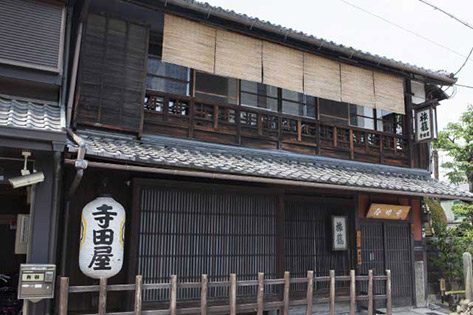
Fushimi is also famous as a place associated with Ryoma Sakamoto. Teradaya” is an inn where Ryoma Sakamoto, known for the Teradaya Incident, used to stay. Unfortunately, it was destroyed by fire during the Battle of Toba-Fushimi, and later rebuilt. Inside the building, many historical documents related to the Meiji Restoration are displayed, and in the “Ume-no-Ma” room, items related to Ryoma are open to the public.Hours.10:00-15:40 (closing at 16:00)regular closing dayClosed Jan. 1-3 and irregular holidays on MondaysChargeAdults 600 yen, junior high and high school students 300 yen, elementary school students 200 yen (no admission for infants)AccessApproximately 7 minutes on foot from Chushojima Station on the Keihan Line
10 minutes walk from “Momoyama-Goryomae” station of Kintetsu lineaddress (e.g. of house)263 Minamihama-cho, Fushimi-ku, Kyoto
Byodoin Temple
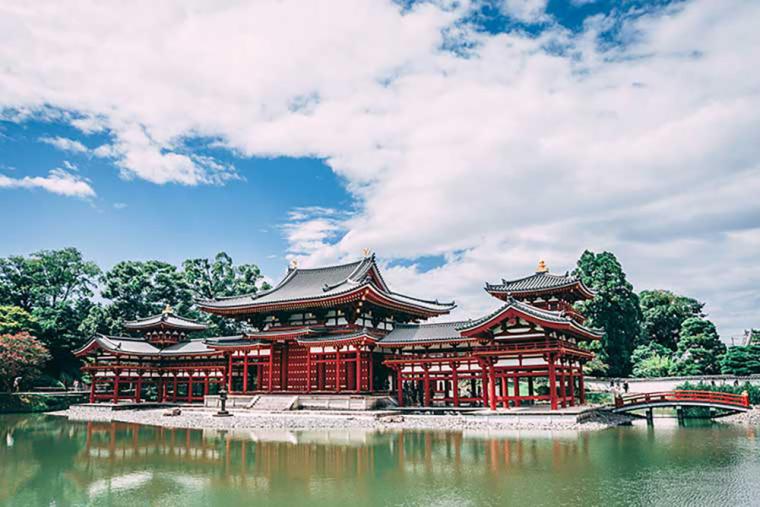
The villa of Fujiwara no Michinaga was converted into a temple by his son Yorimichi in 1053 and called “Byodoin”. It is registered as a World Heritage site, and the “Phoenix Hall” depicted on the reverse side of the 10-yen coin remains as a symbol of the Fujiwara regal period.
In the Byodoin Museum Hoshokan, visitors can see a vividly restored video exhibit using computer graphics, as well as 26 statues of the national treasures, including one pair of phoenixes and a statue of Unchu Kuyo Bosatsu (Bodhisattva in the Clouds).Hours.[Garden] 8:30 – 17:30 (registration closes at 17:15)
[Inside the Phoenix Hall] 9:30 – 16:10 (every 20 minutes, 50 people per visit, registration from 9:00, closes when capacity is reached)
[Byodoin Museum Hoshokan] 9:00 – 17:00 (last admission at 16:45)
Open all year roundCharge[Garden + Byodoin Museum Hoshokan] 600 yen for adults, 400 yen for junior high and high school students, 300 yen for elementary school students
[Ho-o-oh-do Hall interior entrance fee] 300 yenAccess10 minutes walk from JR “Uji” station
About 10 minutes on foot from Keihan “Uji” Stationaddress (e.g. of house)116 Uji-Renge, Uji City, Uji, Japanhome pageByodoin” official website
Uji Bridge, Statue of Murasaki Shikibu
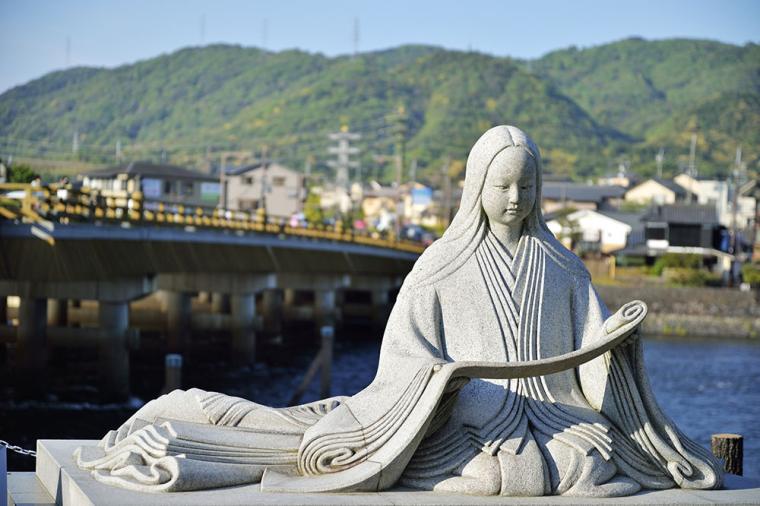
The Uji Bridge is said to be the first full-scale bridge in Japan. The current bridge was replaced in 1996, with a design that matches the surrounding landscape and evokes a sense of history. Since Uji is the setting of “The Tale of Genji”, there is a statue of Murasaki Shikibu at the foot of the bridge, which is recommended as a photo spot.AccessShort walk from Keihan “Uji” Station
About 10 minutes on foot from JR “Uji” Stationaddress (e.g. of house)Uji Higashiuchi, Uji City, Kyoto, Japan
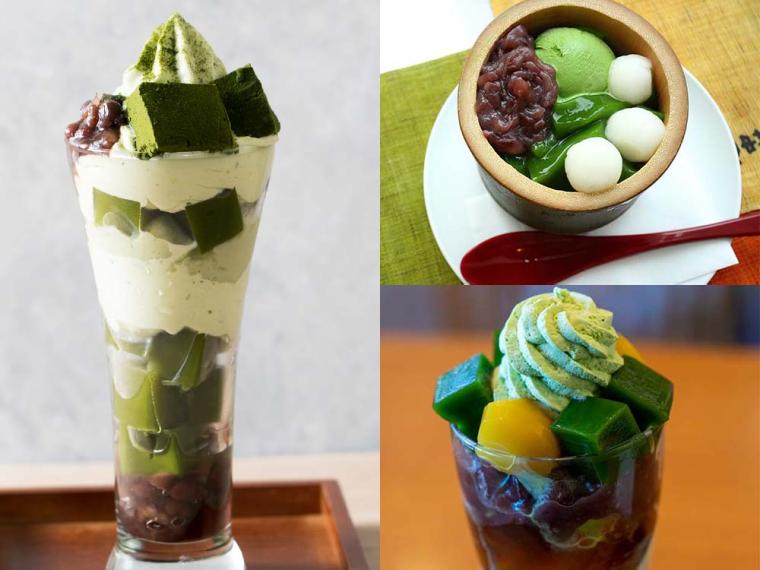
And if you come to Kyoto, you cannot miss out on sweets made with matcha green tea. Uji, one of Japan’s most famous tea ceremony spots, has a particularly rich lineup of matcha sweets stores. Try trying out some of the many stores, both old and new, including Ito Kyuemon, Nakamura Tokichi, Fukujuen, and Tsuen, to find your favorites.
Mimuroto-ji Temple
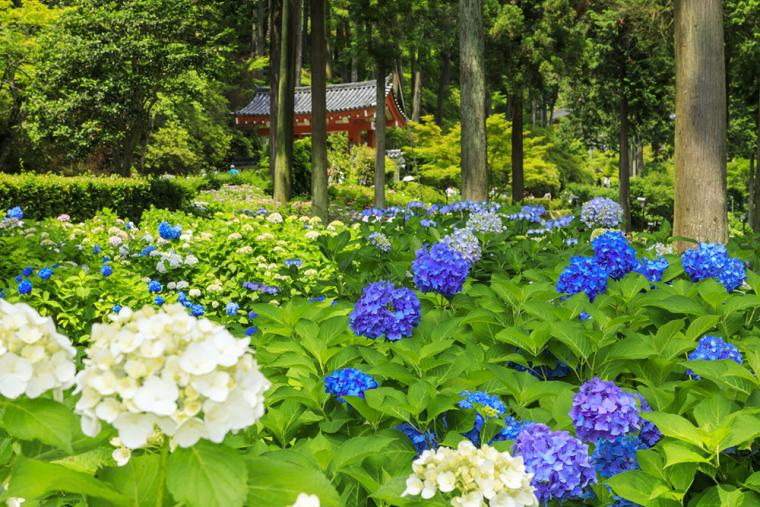
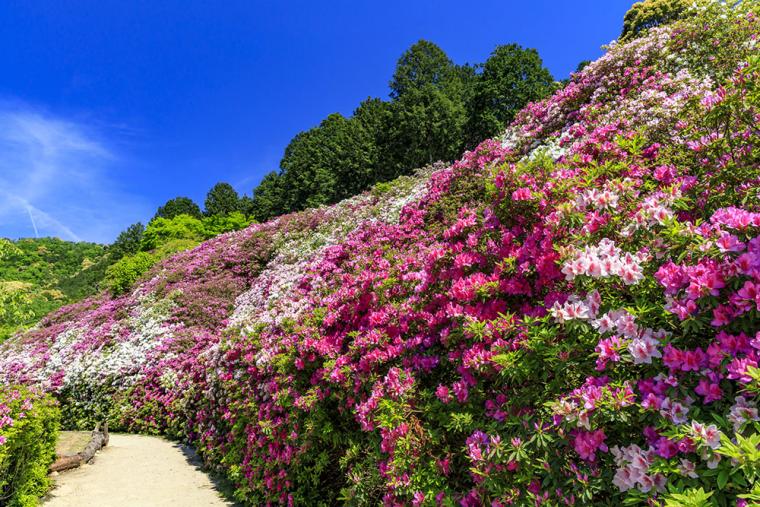
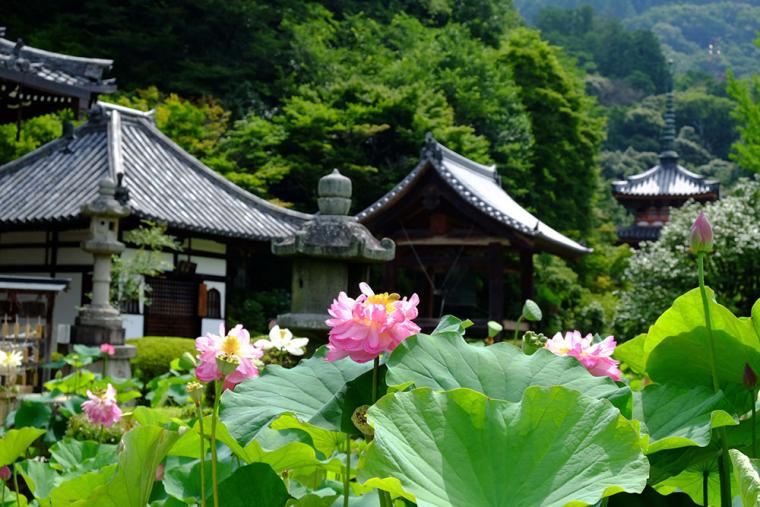
Mimuroto-ji Temple is famous for its hydrangeas and is called “Ajisai-dera. The hydrangea garden, with 20,000 hydrangea plants of about 50 varieties, is open to the public when the hydrangeas are at their best. The azaleas in spring and lotus in early summer are also magnificent.
The temple itself is an old temple said to have been founded by Emperor Kounin in the Nara period (710-794), and houses a marquetry statue of Amida Nyorai, flanked by statues of Kannon Seishi Bosatsu and Shaka Nyorai.Hours.[April – October] 8:30 a.m. – 4:30 p.m.
[Nov. to Mar.] 8:30-16:00 (open until 30 minutes before)regular closing dayDecember 29-31, August 13-15ChargeAdults 500 yen, children 300 yen
(*Different prices apply when the hydrangea garden, azalea garden, and weeping plum tree garden are open.AccessApprox. 15 min. walk from Mimuroto Sta. of Keihan Railway Co.address (e.g. of house)21 Shigadani, Suido, Uji Cityhome pageMimuroto-ji Temple Official Website
Shoujuin Temple
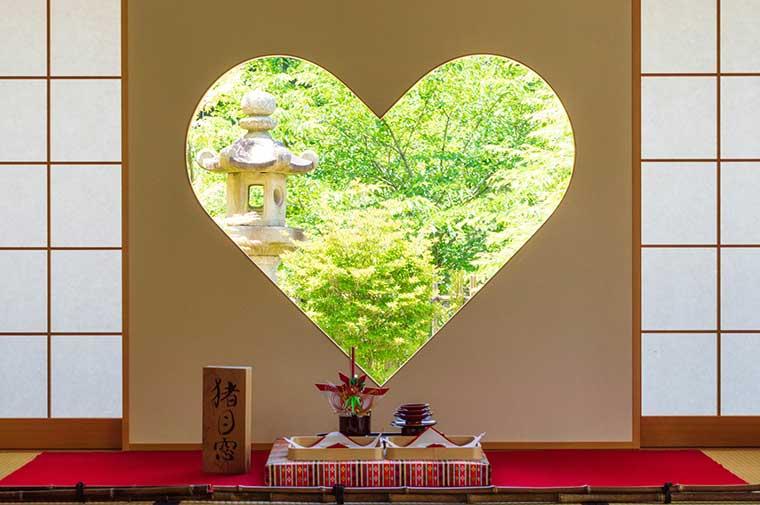
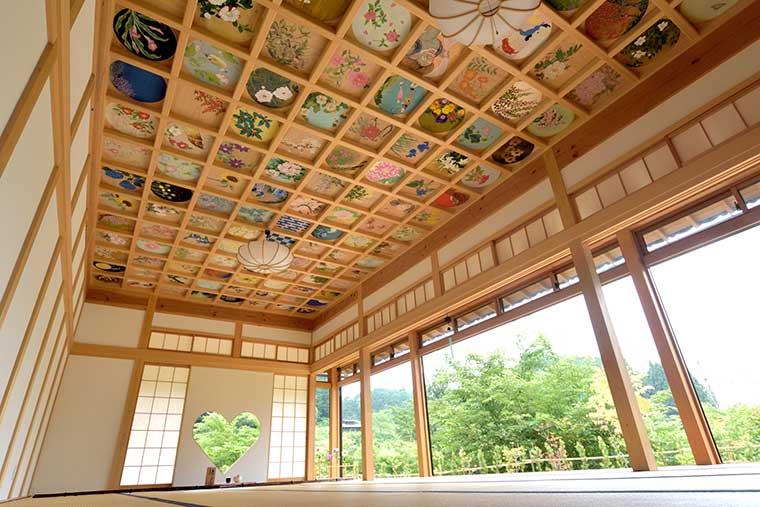
Shojuin is popular for its cute heart-shaped window “Inome-mado”. The 160 colorful ceiling paintings are sure to be a hit on social networking sites!Hours.[April – November] 9:00 – 16:30
[December – March] 10:00 – 16:00Charge600 yen (with tea and sweets)AccessApprox. 30 minutes by cab from JR/Keihan “Uji” station or Kintetsu “Shintanabe” station
From Uji Station, take Kyoto Keihan Bus to Ishinaka-mae Bus Stop, approx. 10 minutes by cab.address (e.g. of house)149 Kawakami, Okuyamada, Ujitawara-cho, Tsuzuki-gunhome pageShojuin” official website
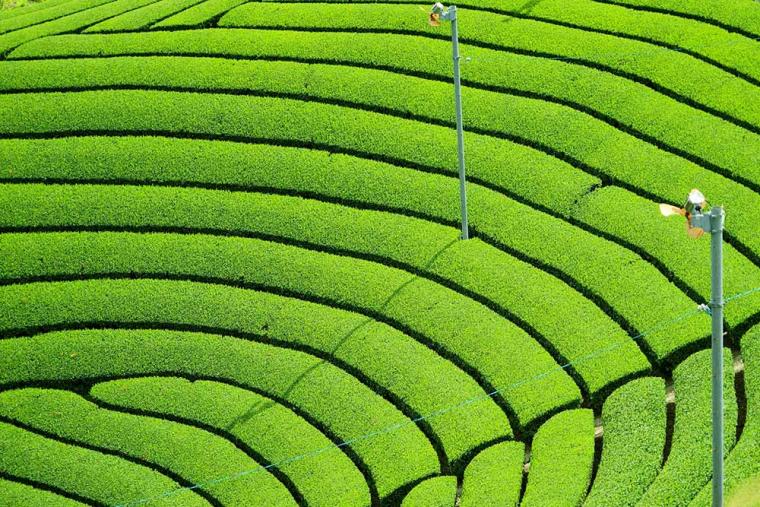
Incidentally, Wazuka-cho, a short distance from Shojuin, is a major producer of Uji tea, and you can see beautiful scenery of tea fields like this. Why not enjoy a tour of these beautiful spots in addition to Shojuin?
Suntory Yamazaki Distillery [*Closed until fall 2023].
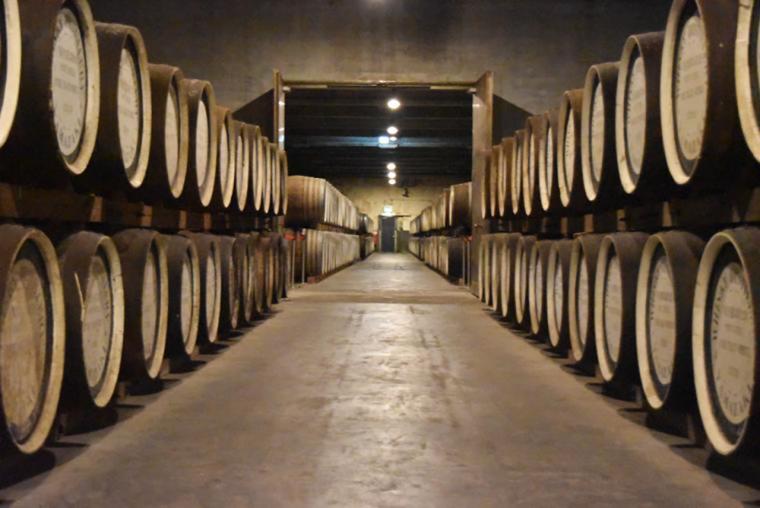
Yamazaki is located on the border of Kyoto and Osaka, and is known for Suntory’s Yamazaki whiskey. At the Suntory Yamazaki Distillery, there are exhibits related to whiskey, a store selling original goods only available here, and tours where visitors can enjoy factory tours and tastings (for a fee).Hours.10:00 – 16:45 (last admission 16:30) *Reservations requiredregular closing dayYear-end and New Year holidays and factory closures (temporary closures are available)ChargefreeAccess10 minutes walk from JR “Yamazaki” station
10 minutes walk from Hankyu “Oyamazaki” stationaddress (e.g. of house)5-2-1, Yamazaki, Shimamoto-cho, Mishima-gun, Osakahome pageSuntory Yamazaki Distillery official website
Asahi Beer Oyamazaki Villa Museum of Art
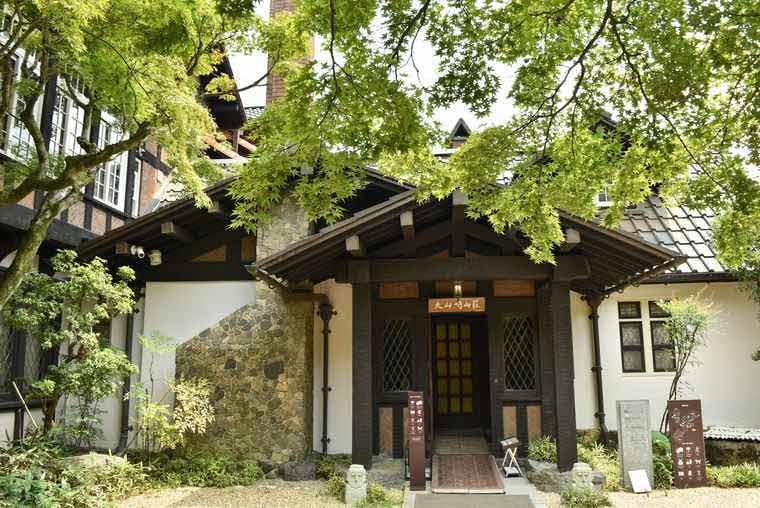
The Asahi Beer Oyamazaki Villa Museum of Art consists of the main building, a restored villa built in the Taisho and Showa periods by Shotaro Kaga, a businessman who was also involved in the establishment of Nikka Whiskey, and a new wing designed by the world-renowned architect Tadao Ando.
The museum’s main exhibit is the collection of Tamesaburo Yamamoto, the first president of Asahi Breweries, Ltd. Works by Kawai Kanjiro, Bernard Leach, and others who were central figures in the Mingei movement, as well as Claude Monet’s “Water Lilies” can be seen in the new Ando Architectural Building.
Visitors can also enjoy the seasonal plants in the approximately 5,500 tsubo garden and the view of the Kizu, Uji, and Katsura Rivers flowing by from the terrace of the tearoom.Hours.10:00-17:00 (last admission 16:30)regular closing dayMondays (or the following day if Monday is a national holiday), Year-end and New Year holidaysChargeAdults 900 yen, High school and college students 500 yen, Free for junior high school students and youngerAccess10 minutes walk from JR “Yamazaki” station
10 minutes walk from Hankyu “Oyamazaki” stationaddress (e.g. of house)5-3 Zenihara, Oyamazaki Town, Otokuni-gunhome pageAsahi Beer Oyamazaki Villa Museum of Art official website
Ishimizu Hachimangu Shrine
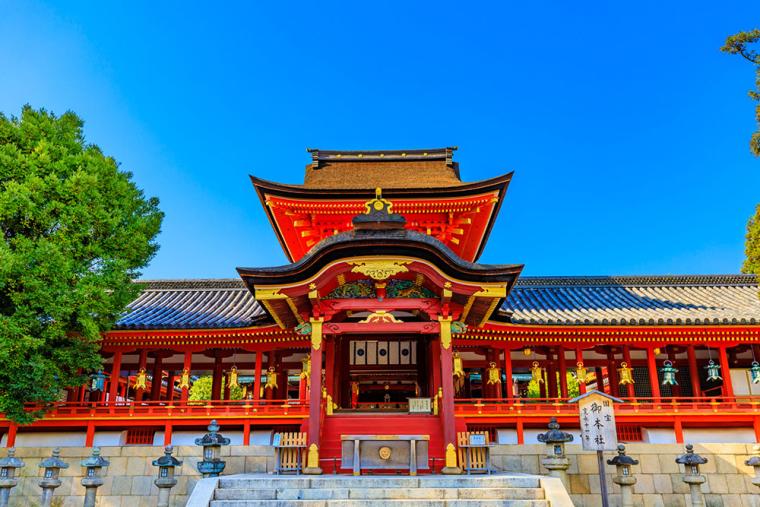
Ishimizu Hachimangu Shrine is one of the three largest Hachimangu shrines in Japan, located on the site where three rivers converge to form the Yodo River. The shrine pavilion on top of the mountain is the oldest and largest existing Hachiman-zukuri shrine pavilion, and is designated as a national treasure.
Famous warlords worshipped here, and there is a camphor tree dedicated by Masanari Kusunoki, a pine tree said to have been dedicated by Yoritomo Minamoto, and a rain gutter said to have been donated by Nobunaga Oda. There is also a monument to Edison, who used bamboo from Yawata to light an incandescent light bulb for a long time.Hours.6:00-18:00 (awarding office: 9:00-16:00)ChargefreeAccessFrom Keihan Ishimizu Hachimangu Station, get off at Hachimanguyama-jo Station on the approach cable.address (e.g. of house)30 Yawata Takabo, Yawata City, Kyoto, Japanhome pageIshimizu Hachimangu Shrine Official Website
Shokado Garden and Art Museum
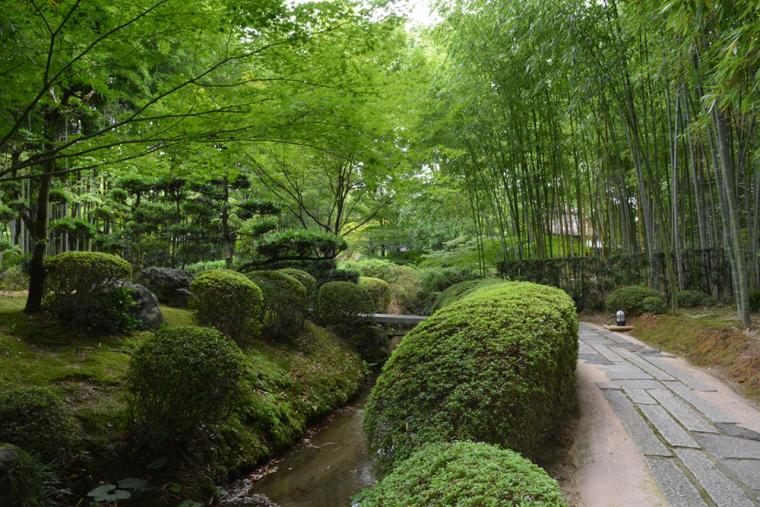
Near Ishimizu Hachimangu Shrine is the Shokado Garden and Museum, where Shokado Shojo, a central figure in the Kanei Culture that flourished in the early Edo period, spent the last years of his life. The Japanese garden is 22,000 square meters in size.
This is also the birthplace of Shokado bento, and visitors can enjoy Shokado bento with a view of the garden at the adjacent Kyoto Kitcho Shokado Restaurant.Hours.9:00-17:00 (last admission 16:30)no-holidayMondays (or the following weekday if Monday is a national holiday), December 27 – January 4Charge[Garden] Adults 300 yen, Students 220 yen, Children 150 yen
[Museum] Adults 400 yen and up (depends on the exhibition)AccessShort walk from Oshiba/Shokado-Mae bus stop from Ishimizu-Hachimangu and Kuzuha Stations on the Keihan Lineaddress (e.g. of house)43-1 Yawata-Merohana, Yawata Cityhome pageShokado Garden and Museum of Art” official website
10] Ohara, Kurama, Kibune
This area is popular as the back seat of Kyoto, an area full of nature. The area from Kibune to Kurama is also recommended as a hiking course.
Kurama Temple
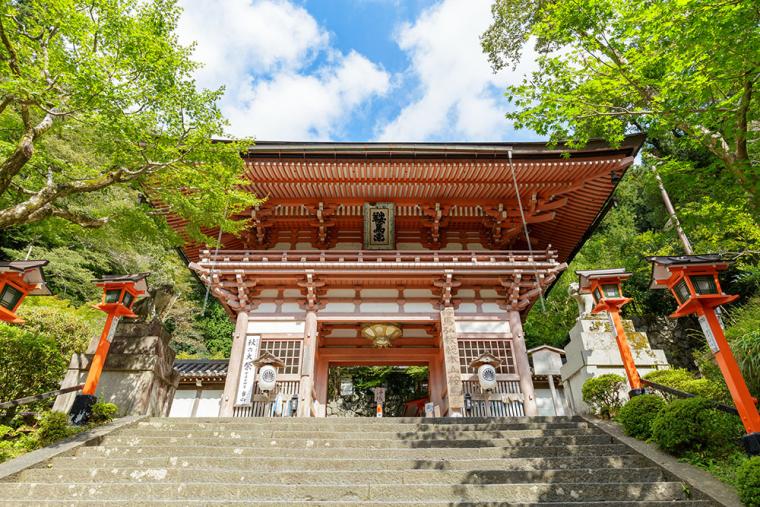
Kuramadera Temple is famous as the temple where Minamoto no Yoshitsune spent his boyhood called Ushiwakamaru. The temple was founded in the Nara period (710-794) by Gancho Shonin, a disciple of Ganjin Wajo, to worship Bishamonten (goddess of mercy). A statue of Bishamonten, a national treasure, is enshrined in the Reihouden. Stone steps lead up to the main Kondo hall, but it is possible to take a cable car to the halfway point.Hours.9:00~16:15
Open all year roundshrine of imperial ancestors[Business hours] 9:00-16:00
[Closed] Mondays (or the following day if Monday is a national holiday), December 12 – the last day of February
[Admission fee] 200 yenCharge[Aiyama fee: 500 yen
[Cable donation] 200 yen for adults, 100 yen for elementary school students and younger (one-way)AccessEizan Electric Railway “Kurama” Station, Kyoto Bus “Kurama” stop
Approx. 30 minutes on foot to the Main Kondo Hall, or approx. 2 minutes on the cable + approx. 10 minutes on foot.address (e.g. of house)1074 Kurama Honmachi, Sakyo-ku, Kyotohome pageKuramadera Temple official website
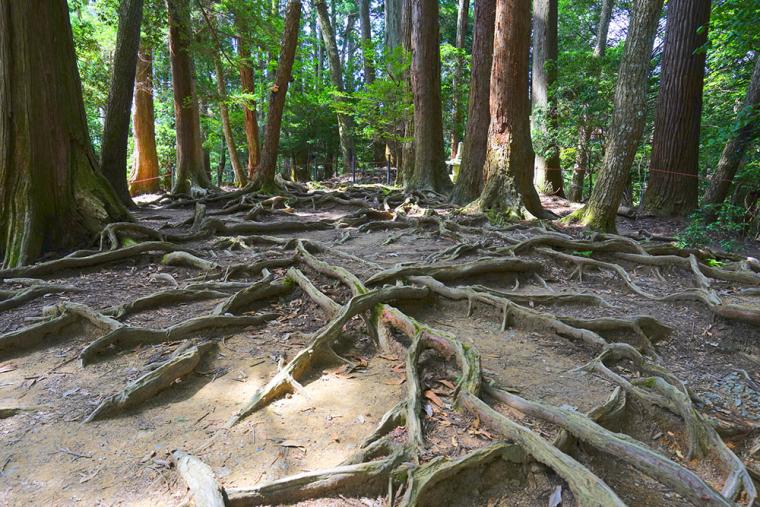
Also popular is the hiking course from Kurama to Kibune. Along the way, there is the study of poet Akiko Yosano, a “tree root path” where tree roots cover the ground surface, and a spot associated with Yoshitsune, which takes about two hours.
Kibune Shrine (shrine)
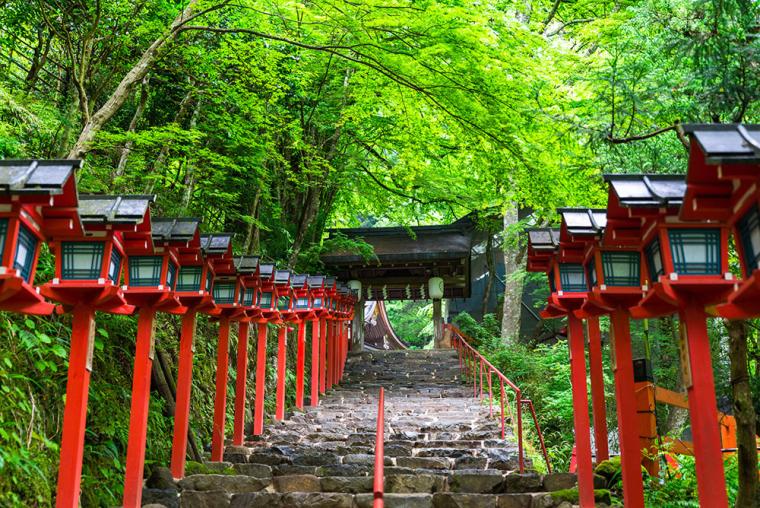
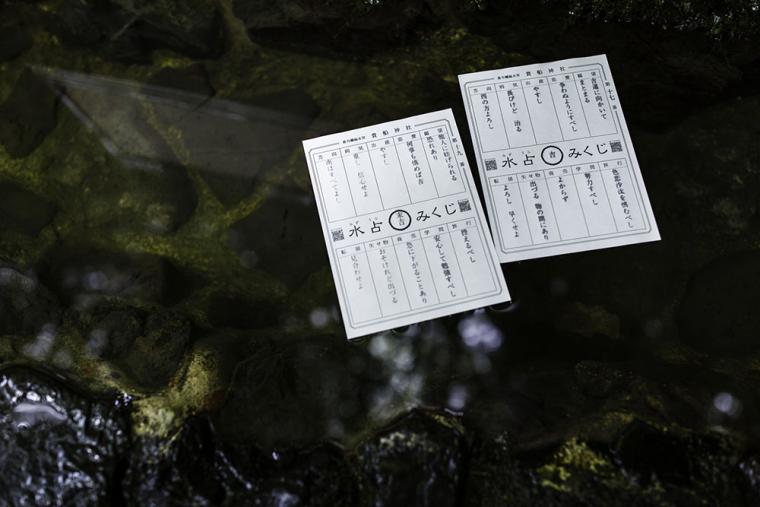
This ancient shrine has an approach along the Kibune River, the source of the Kamo River. It is one of the most popular power spots in Kyoto, where the god of water is enshrined, and is also popular as a god of marriage. The “mizuura mikuji” (divination by water) is a must-see, in which visitors float their omikuji in the sacred water that gushes out from Mt.
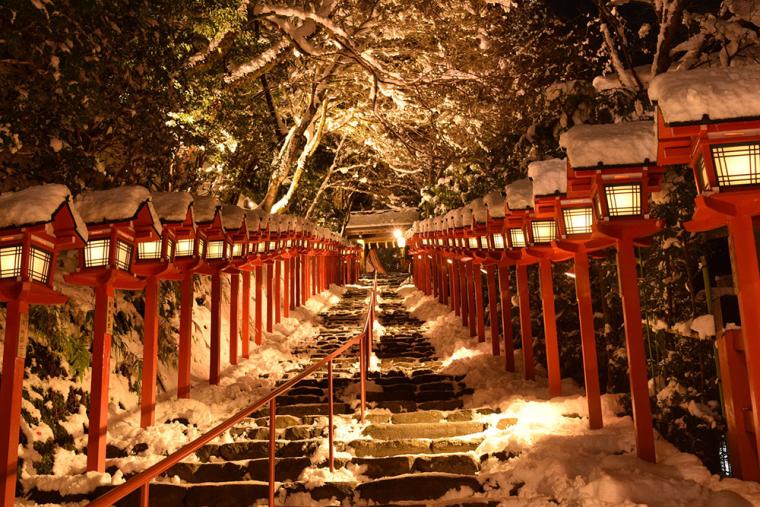
In winter, when there is snow on the ground, the temple is illuminated at night.Hours.[May – November] 6:00 – 20:00
[December – April] 6:00 – 18:00 (except Jan. 1 – 3 and during the illumination period)
[9:00-17:00 (extended during the illumination period)
Open all year roundChargefreeAccessFrom Kibune-guchi Station on the Eizan Electric Railway Line, take the Kyoto Bus to Kibune, and walk 5 minutes.address (e.g. of house)180 Kurama Kibune-cho, Sakyo-ku, Kyoto, Japanhome pageKibune Shrine official website
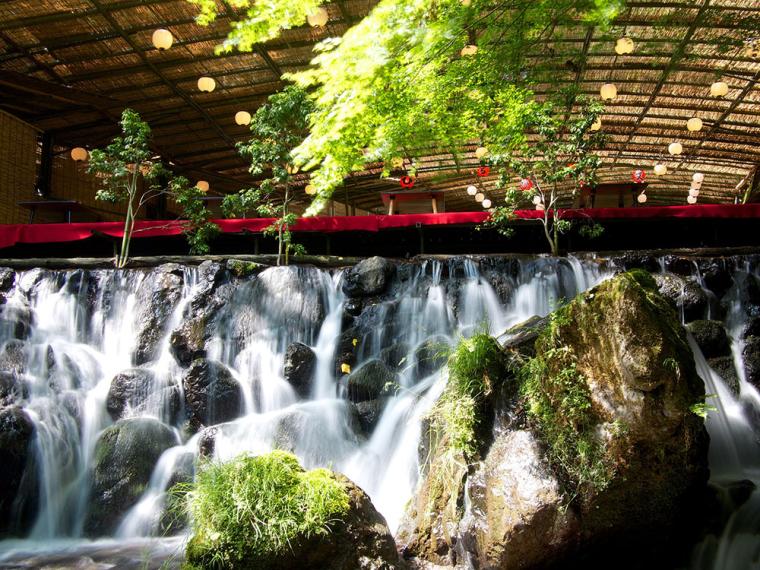
In summer, kawadoko (riverbeds) appear on the Kibune River near the shrine. We recommend enjoying Kyoto cuisine for lunch or dinner while feeling the cool air.
House of Councillors

Sanzen-in Temple, a temple of the Tendai sect, is said to have originated from Enryu-bo, which was built by Saicho, a great teacher of Tendai Buddhism, on Mt. There are many attractions such as “Juhekien” and “Yuseien,” two gardens designated by Kyoto City as places of scenic beauty, “Oujo Gokurakuin,” designated as an important cultural property, and the main hall.
From mid-June to July, don’t miss the hydrangea garden where you can enjoy the rare star hydrangea.Hours.[March-October] 9:00-17:00
[November] 8:30-17:00
[December – February] 9:00 – 16:30
Open all year roundChargeAdults 700 yen, junior high and high school students 400 yen, elementary school students 150 yenAccessFrom Kyoto Station, take Kyoto Bus to Ohara Bus Stop and walk 10 minutes.address (e.g. of house)540, Ohara Raigo-in-cho, Sakyo-ku, Kyoto, Japanhome pageKyoto Ohara Sanzenin Temple official website
Rurikouin temple (in Kyoto)
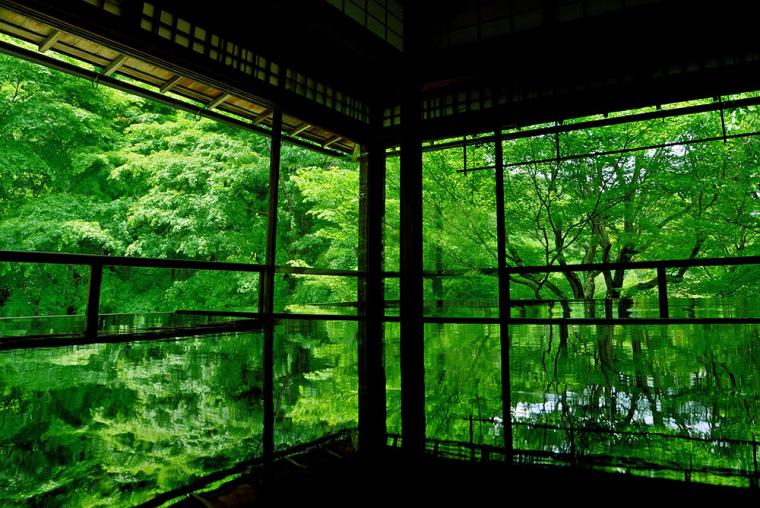
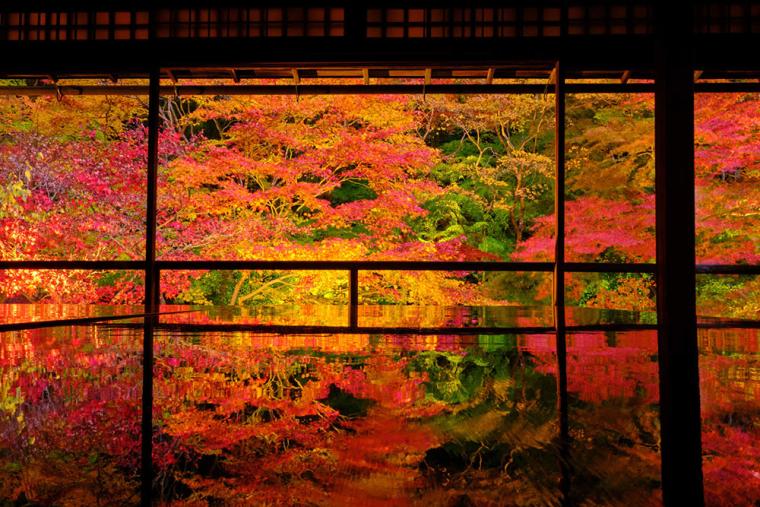
Ruriko-in Temple, located at the foot of Mt. Hiei, is popular for its autumn leaves and blue maples reflecting on the desk. However, it is usually closed to the public, and this spectacular view can be seen only during special viewing periods in spring, summer, and fall.visit[Spring] April 15 – May 31, 2023
[Summer] July 1 – August 17, 2023
[Autumn] October 1 – December 10, 2023 (tentative) *Reservations are required only for the autumn season (details will be posted on the website around October).
10:00 – 17:00 (registration closes at 16:30)Access12 minutes walk from “Yase Hieizamaguchi” station of Eizan Electric Railway
10 minutes walk from Hieizan Cable “Yase” stationaddress (e.g. of house)55 Higashiyama, Kamikoya, Sakyo-ku, Kyotohome pageRuriko-in” official website
Enryaku-ji Temple on Mt. Hieizan
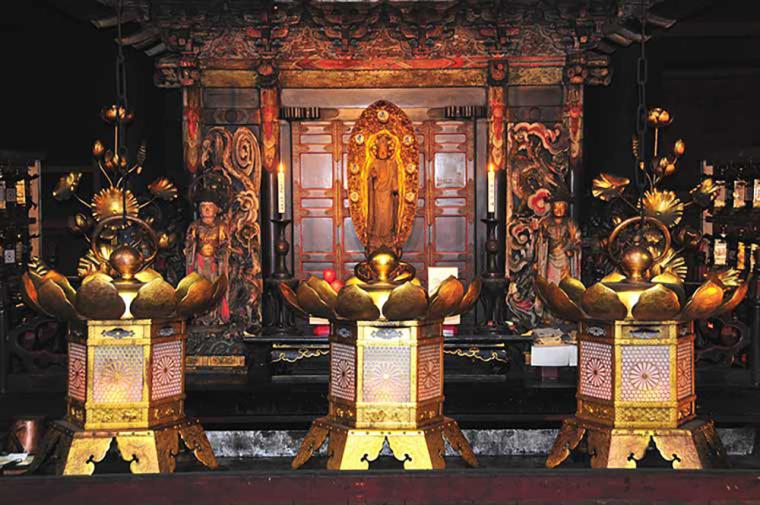

Enryaku-ji Temple, registered as a World Heritage Site, was founded by Saicho in 788. The head temple of the Tendai sect of Buddhism, Enryaku-ji is also a university of Buddhism that has produced many famous monks, including Honen, founder of the Jodo sect of Buddhism; Eisai, founder of the Rinzai sect of Buddhism; Dogen, founder of the Soto sect of Buddhism; and Shinran, founder of the Jodo Shin sect of Buddhism.
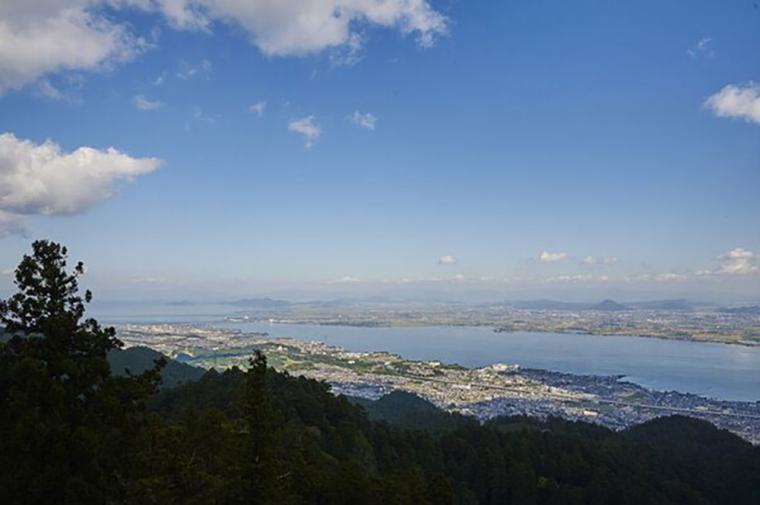
The entire mountain of Hieizan is “Enryaku-ji” and covers an area of approximately 5 million square meters, spanning both Kyoto and Shiga! It is divided into three areas, the East Pagoda, the West Pagoda, and Yokogawa, where you can see important cultural properties, beautiful mosses, and the autumn leaves in fall. Another attraction is the panoramic view of Kyoto city and Lake Biwa.Hours.9:00-16:00 (last admission at 15:45)
West Pagoda and Yokogawa are open from December to February 9:30~.Charge[East Pagoda, West Pagoda, Yokogawa Common ticket] Adults 1,000 yen, Junior and senior high school students 600 yen, Elementary school students 300 yenAccessApprox. 70 minutes from Kyoto Station by Hieizan Drive Bus to “Enryakuji Bus Center”.
Keihan “Demachiyanagi” Station → Eizan Electric Railway “Yase Hieizamaguchi” Station → Eizan Cable “Cable Hiei” Station → Eizan Ropeway “Hieizan Summit” Station → Shuttle Bus “Enryakuji Bus Center” stopaddress (e.g. of house)4220 Sakamoto Honmachi, Otsu City, Shiga Prefecturehome pageHieizan Enryakuji Temple Official Website
11] Tango Peninsula, Northern Kyoto Prefecture
The northern part of Kyoto Prefecture faces the Sea of Japan, with its bathing beaches and hot springs. Another attraction is the abundance of foodstuffs, both from the sea and the mountains, which can be enjoyed throughout the year, including Matsuba crab in the winter.
Yuhigaura (Buddhist guardian deities sometimes depicted as demonic warriors)
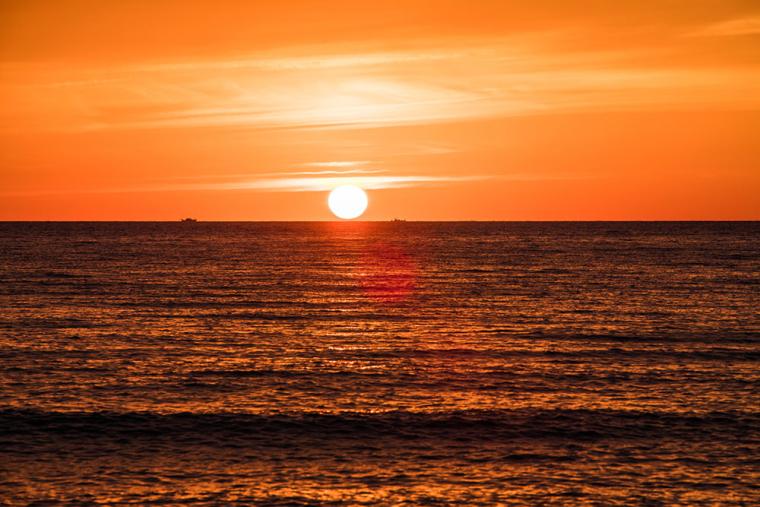
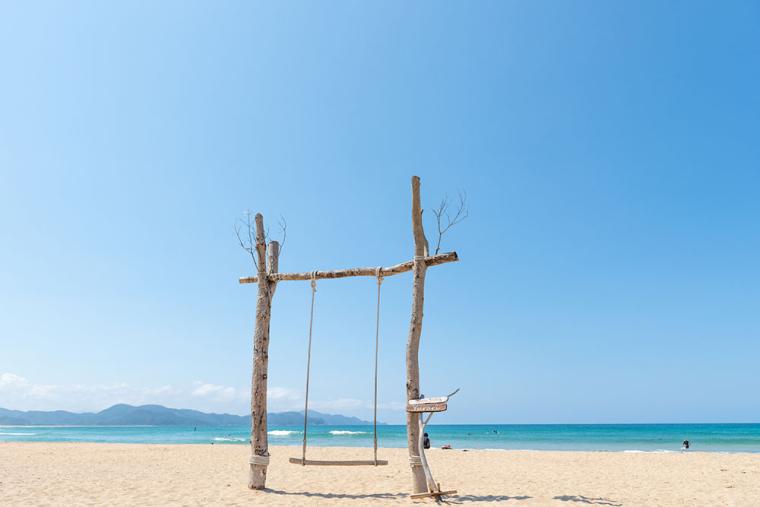
As its name suggests, “Yuhigaura” in Amino Town on the Tango Peninsula offers a beautiful sunset over the Sea of Japan. Along the seaside are rows of Yuhigaura Onsen ryokan (hot springs), where visitors can enjoy swimming in the sea in summer and pine needle crabs in winter. The beach has swings and “YUHIGAURA” monuments, and is also attracting attention for its SNS-worthy photos.Access[Car] Approx. 30 minutes from the Kyotango Omiya Interchange on the Sanin-Kinki Expressway.
[Train / Bus] From Kyoto Tango Railway “Yuhigaura Kizu Onsen” station, take a TANKAI BUS for 10 minutes, get off at “Sotoyu Hana Yumi” and walk for 5 minutes.address (e.g. of house)Hamazume, Amino-cho, Kyotango City
Amanohashidate (heavenly musicians and protectors of Buddhism)

Amanohashidate is one of the three most scenic spots in Japan. Amanohashidate is one of the three most scenic spots in Japan. A sandbar stretches approximately 3.6 km, separating Miyazu Bay from the Aso Sea, and is lined with 6,700 pine trees. For a panoramic view, visit “Amanohashidate Viewland” on top of Mt. The sandbar can also be crossed on foot.AccessTo Amanohashidate Viewland
[Car] About 10 minutes from the Miyazu-Amanohashidate Interchange on the Kyoto Jukan Expressway.
[Train] 5 min. walk from “Amanohashidate” station of Kyoto Tango Railway.address (e.g. of house)Bunju, Miyazu Cityhome pageAmanohashidate Viewland official website
boathouse at Ine
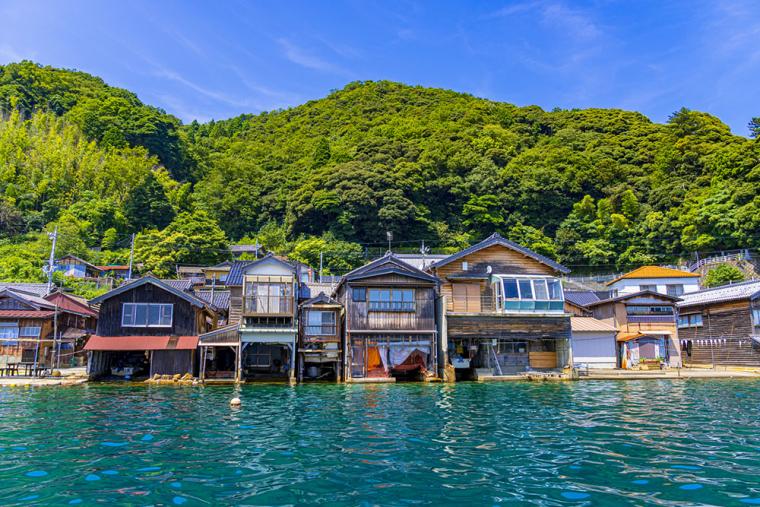
In Ine Bay, about a 30-minute drive from Amanohashidate, you will find an unusual landscape where houses seem to float on the sea. These houses are called “funaya,” with a boat garage on the first floor and living quarters on the second floor. The boathouses can be seen up close from Ine Ura Park, or from the sea if you take a sightseeing boat.Access[Car] Approx. 30 minutes from the Yosa-Amanohashidate Interchange on the Kyoto Jukan Expressway.
[By train or bus] From Kyoto Tango Railway Amanohashidate Station, take a TANKAI BUS for about 1 hour, and you will soon arrive at “Ine Bay Tour – Hinode”.address (e.g. of house)Aza-Hirata, Ine-cho, Yosae-gun, Kyoto
Maizuru Red Brick Park
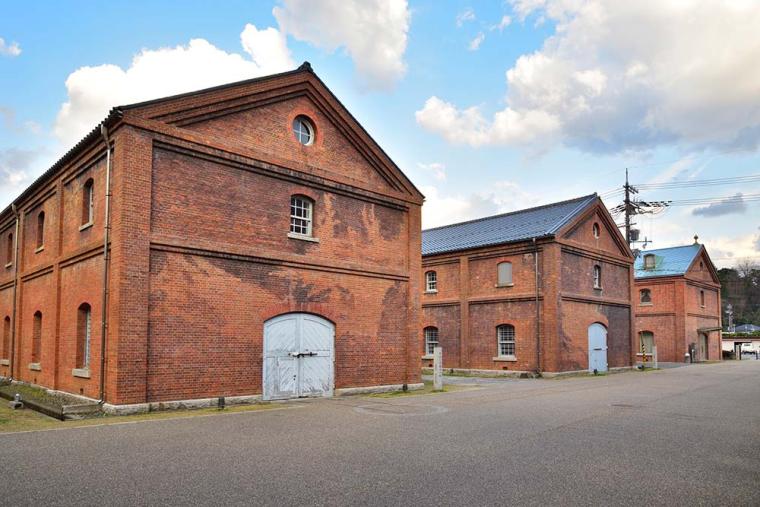
Maizuru is a port town located in northeastern Kyoto Prefecture. Since the opening of the township during the Meiji period (1868-1912), many red brick buildings were constructed, and these still remain today. The retro red brick warehouses include fashionable cafes, museums, and event halls.
From the sightseeing boats that cruise the harbor, visitors can see the Self-Defense Force’s Aegis and the helicopter-carrying destroyer Hyuga.Hours.9:00-17:00closed dayDecember 29 – January 1Access[Car] 15 minutes from the Higashi Maizuru Interchange on the Maizuru-Wakasa Expressway.
[Train] Approx. 20 minutes walk from JR Higashi-Maizuru Station.address (e.g. of house)1039-2, Kita-suke, Maizuru Cityhome pageMaizuru Akarenga Park official website
Miyama Kayabuki-no-Sato
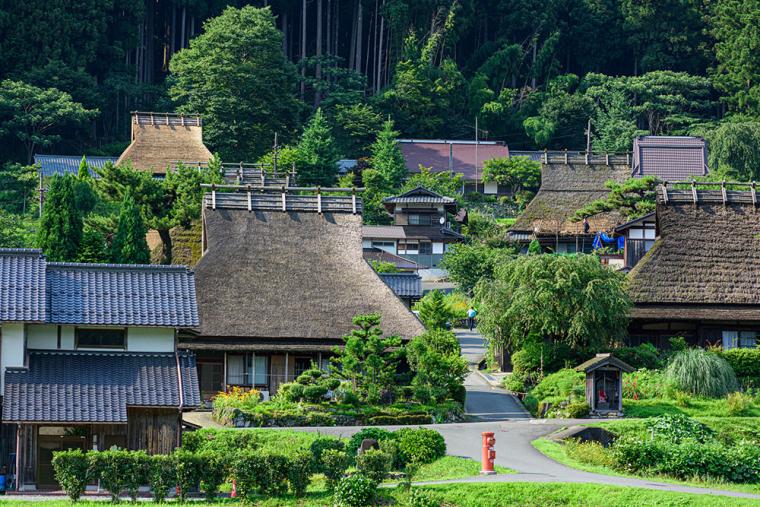
Miyama-cho, Nantan City, located north of Kyoto City on the border with Fukui Prefecture, has attracted attention for its original Japanese landscape, with many houses with shingled roofs built in the Edo and Meiji periods still standing. There is also a museum and a café in the village.Parking lot hours[April – November] 9:00 – 17:00
[December – March] 10:00 – 16:00parking feeRegular car: 500 yen, Motorcycle: 200 yenAccess[Car] Approximately 1 hour and 30 minutes from downtown Kyoto
[Train / Bus] Approx. 56 min. by Nantan City Bus from Hiyoshi Station on the JR Sanin Line to Kita (Kayabuki-no-Sato) Bus Stop.
Be careful of snow accumulation in winter.address (e.g. of house)Kita, Miyama-cho, Nantan City
投稿者プロフィール

- Je vous fournirai des informations touristiques et gastronomiques brutes sur le Japon ! Certains mots peuvent être inadéquats, mais nous espérons que vous apprécierez mon blog !
最新の投稿
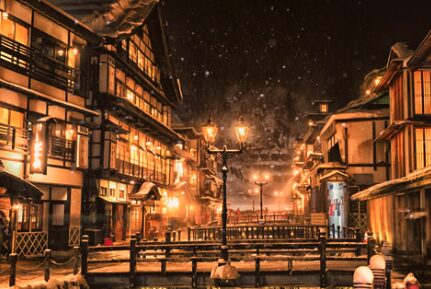 Akita2024-01-16Ranking of popular sightseeing spots in Tohoku! Onsen (hot springs), summer festivals, and lots of attractions!
Akita2024-01-16Ranking of popular sightseeing spots in Tohoku! Onsen (hot springs), summer festivals, and lots of attractions!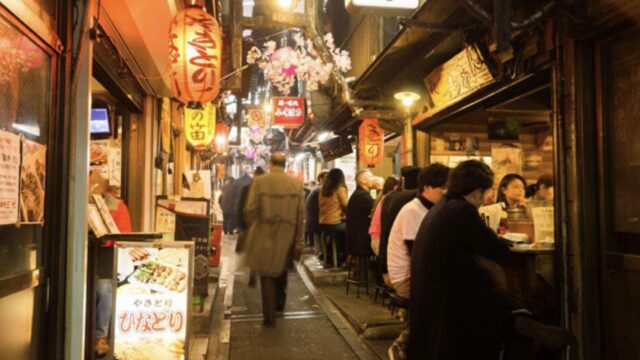 Gourmet2024-01-11[2024] 24 Tokyo Restaurants that Visitors to Japan Will Love! Introducing popular restaurants, izakaya (Japanese style pubs), and dining districts.
Gourmet2024-01-11[2024] 24 Tokyo Restaurants that Visitors to Japan Will Love! Introducing popular restaurants, izakaya (Japanese style pubs), and dining districts.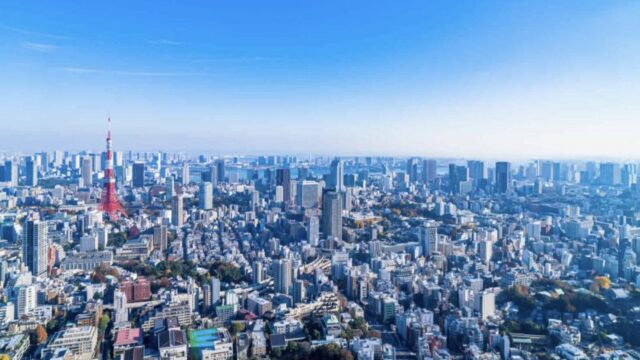 Japan2024-01-11[2024] Tokyo Sightseeing Spots: 73 Spots Recommended for Sightseeing in Tokyo, Japan! Complete coverage of the latest spots!
Japan2024-01-11[2024] Tokyo Sightseeing Spots: 73 Spots Recommended for Sightseeing in Tokyo, Japan! Complete coverage of the latest spots!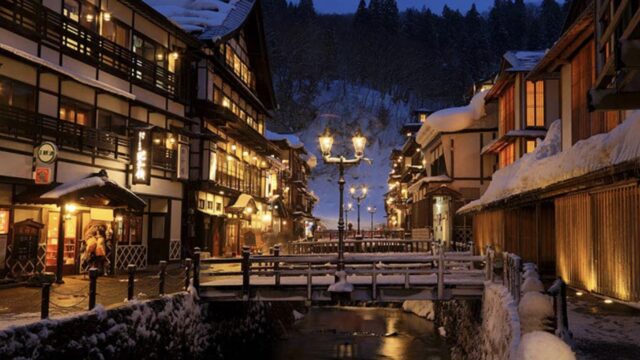 Japan2024-01-03Discover the beautiful winter of Japan! 15 “Spectacular Winter Views” in Japan
Japan2024-01-03Discover the beautiful winter of Japan! 15 “Spectacular Winter Views” in Japan